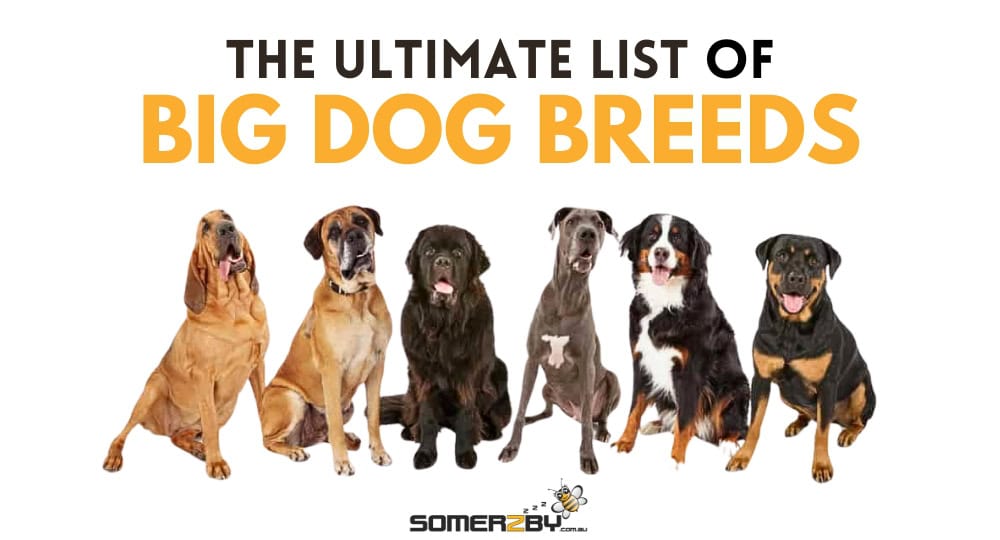Dogs
The Ultimate List of 50 Big Dog Breeds
TABLE OF CONTENTS
- MOST POPULAR
- FLUFFIEST
- WHITE & FLUFFY
- AUSTRALIAN BREEDS
- ASIAN BREEDS
- SHEDS THE MOST
- SHEDS THE LEAST
- MUSCULAR
- FAMILY
- MOST AGGRESSIVE/DANGEROUS
- DOG PRODUCTS
THE ULTIMATE LIST OF BIG DOG BREEDS
Large dogs have been a family favourite for a long time – the bigger the dog the more to love!
From the slobbering Bulldog to the dignified Poodle and everything in between, our Ultimate List covers all the 50 most popular large dog breeds.
Whether you want a new best friend, a guardian of the home, or a sporting companion, this list will help you find the perfect pup for your family.
Not sure where to start? Check out our categories that highlight some of the more popular breeds.
MOST POPULAR
Australia’s had a long love for big dogs, and these rank as the most popular. These breeds are instantly recognisable, whether they’re the doting family companion or the agility superstar.
Some of the most popular include:
- Staffordshire Bull Terrier
- Labrador Retriever
- German Shepherd
- Golden Retriever
- Border Collie
- Staffordshire Terrier
- Poodle
- Rottweilers
FLUFFIEST
Fluffy dogs are one of the most popular breed choices, despite the hot Australian sun.
Remember that more fur usually equals more hair, so expect some grooming with these big teddy bears.
- Chow Chow
- Collie
- Newfoundland
- Old English Sheepdog
- Bernese Mountain Dog
- Alaskan Malamute
- Siberian Husky
WHITE & FLUFFY
These dogs with their white fluffy coats could resemble angels – or a big white pillow perfect for cuddling.
Beware of some big personalities lurking under their pure white fur though.
Check out these short-haired breeds:
AUSTRALIAN BREEDS
Everyone loves an Aussie – these breeds all originate from Australian farms, typically seen herding livestock or hunting.
Expect loads of energy and fun with these dogs.
ASIAN BREEDS
These Asian breeds have a rich history, whether that be roaming the Afghan mountains or guarding nobility in Japan.
SHEDS THE MOST
The thought of daily vacuuming or grooming makes you want to run for the hills? Steer clear of these hairy breeds.
- Saint Bernard
- Japanese Akita
- Alaskan Malamute
- Chow Chow
- Golden Retriever
- Great Pyrenees
- Labrador Retriever
- German Shepherds
SHEDS THE LEAST
These dogs are popular choices for people with allergies, or who just can’t stand shedding.
If you do have canine allergies, the best way to test if a dog will set them off is spending time with the pup.
- Komondor
- Poodle
- Portuguese Water Dog
- Airedale Terrier
- Bouvier Des Flandres
- Giant Schnauzer
- Irish Water Spaniel
MUSCULAR
These hunks of muscle have stocky builds and powerful bodies.
Whether they were bred for hunting, guarding, or working, expect a beefy body with these dogs.
- American Pit Bull Terrier
- Staffordshire Terrier
- Doberman Pinscher
- Rottweiler
- Boxer
- Bulldog
- Rhodesian Ridgebacks
- Bullmastiffs
FAMILY
Family favourites for a reason – these dogs have great temperaments, a calm nature, and typically do great with children.
Remember that all big breeds can forget their size and knock things over, so always keep an eye out if your dog is around small children.
Don’t forget about mutts though! With a little research and dedication rescue dogs can make the best family companions.
MOST AGGRESSIVE/DANGEROUS
These dogs have a bad reputation of being scary, or outright aggressive. These reputations are usually mistaken though.
These breeds usually have sweet, loving personalities but mishandling, abuse, or lack of training has made them dangerous.
BIG DOG BREEDS
Afghan Hound
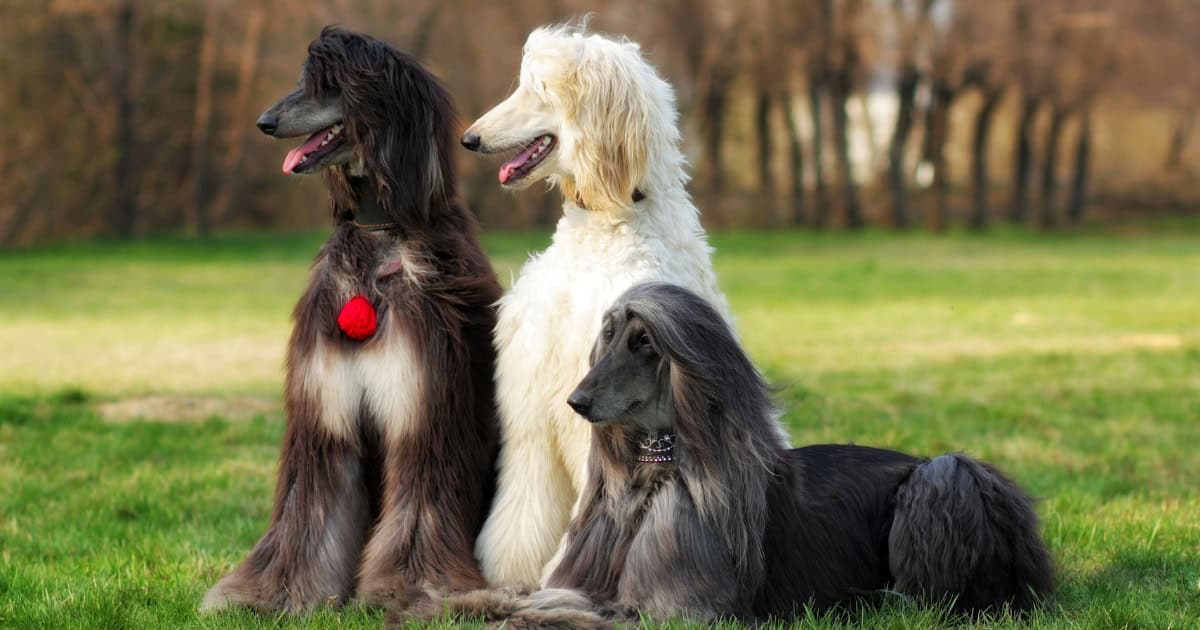 The origin of the afghan hound is the mountains of Afghanistan. The hound is famous for its elegant build and long, flowing coat.
The origin of the afghan hound is the mountains of Afghanistan. The hound is famous for its elegant build and long, flowing coat.
This attractive breed requires plenty of grooming if you want to keep the coat long. Despite known for being dignified, the breed can still be silly clowns and love to play.
Early socialisation is important with this shy, sensitive breed, and they do best in a quiet home away from any stress. An escape proof fence is also needed – these dogs will run away at high speeds the second they’re let off leash.
Airedale Terrier
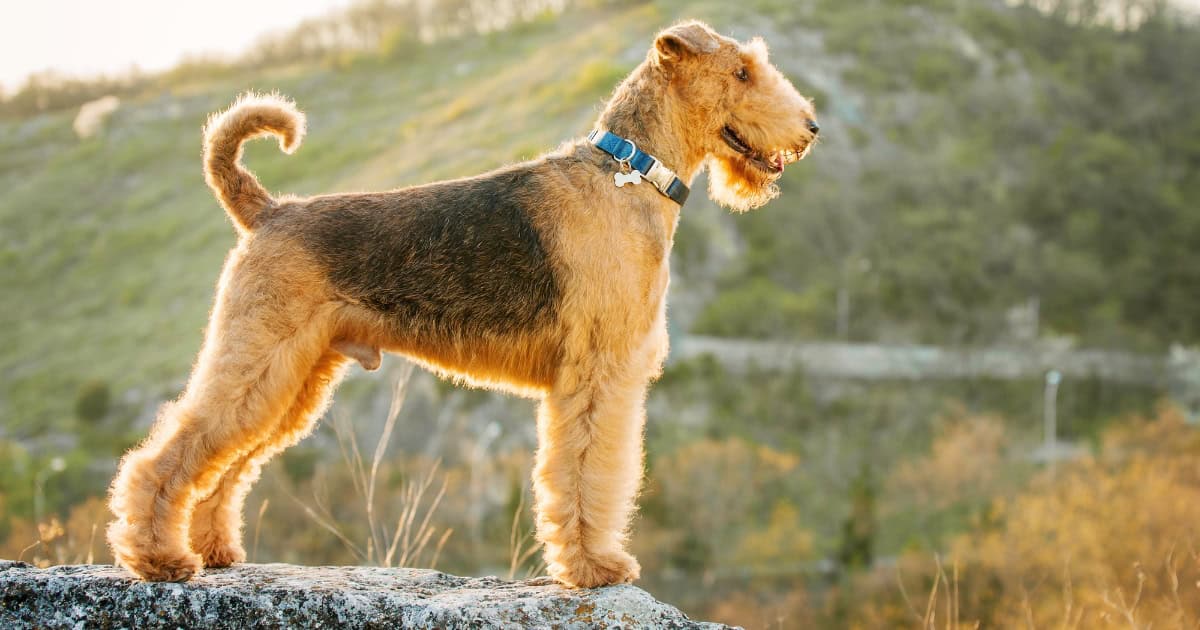 Known as the ‘King of Terriers’, the outgoing and playful Airdale is the largest of all terriers. Males weighs 50 to 60 pounds while Females weigh – 40 to 45 pounds. This breed has the traits of both a sporting and working dog, excelling in obedience and agility tests.
Known as the ‘King of Terriers’, the outgoing and playful Airdale is the largest of all terriers. Males weighs 50 to 60 pounds while Females weigh – 40 to 45 pounds. This breed has the traits of both a sporting and working dog, excelling in obedience and agility tests.
These dogs are very trainable but have an independent streak that shows in his battle of wits with his owner. Airdales have many attractive traits including being excellent watch dogs, an energetic jogging companion, and a comical playmate for children.
Alaskan Malamute
 The Malamute is one of the oldest dog breeds, bred for stamina and toughness.
The Malamute is one of the oldest dog breeds, bred for stamina and toughness.
Closely resembling wolfs, their thick fluffy coats and playful nature have made them a popular breed. Their thick fur is something to be mindful of if you live in a hot climate, and it sheds a lot.
Despite looking fierce these dogs are friendly with everyone and don’t make good watchdogs. They’re extremely loyal to their human pack and can be included in all family activities, particularly high energy activities.
Malamutes have an independent streak and need an owner committed to regular training and willing to firmly establish themselves as the alpha.
American Bulldog
 A breed often considered scary because of it’s muscular body, the Bulldog is really an affectionate, sweet family pet that does well with children.
A breed often considered scary because of it’s muscular body, the Bulldog is really an affectionate, sweet family pet that does well with children.
Their needs can’t be ignored though, they can become anxious and destructive if they don’t have a large backyard to roam in or if they’re left alone often.
Early socialisation training is also important to ensure they’re friendly and calm around people as they do have a territorial nature.
With firm training you’ll be rewarded with a sweet, loyal companion and a great watchdog.
American Pit Bull Terrier
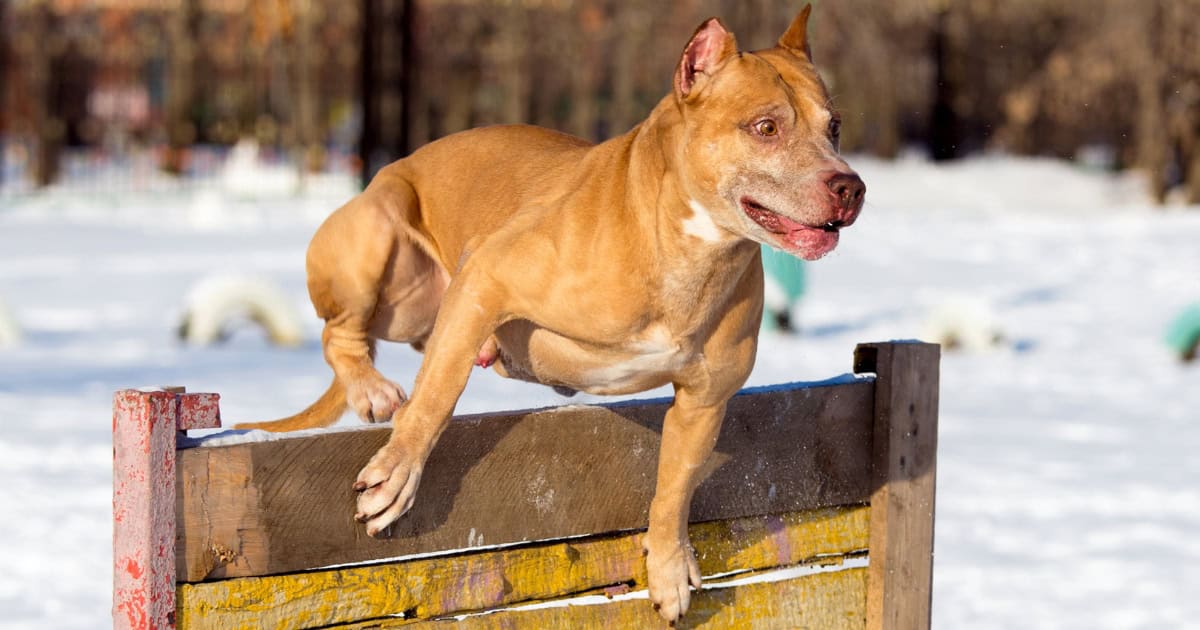
Often misunderstood, this breed has a sad history of being used in dog fighting rings.
This has created a reputation that pit bulls are dangerous, so much so that Australian legislative law has restricted ownership of the breed.
This image is far from the truth though, and these dogs make for a loyal, affectionate companion that will love and protect its family.
Pit Bulls do especially well with children, with their gentle nature and puppyish demeanour.
These dogs usually only become aggressive when owners mishandle them or when they’re not trained. Early socialisation and firm, consistent training is key here.
White Shepherd
 These dogs look identical to German Shepherds besides their fluffy coat, which is always white.
These dogs look identical to German Shepherds besides their fluffy coat, which is always white.
These strong, athletic dogs love lots of physical and mental exercise, and need plenty of challenging activities.
Keeping them interested is important to avoid boredom and destructiveness.
They have a sweeter temperament than German Shepherds though, and for this reason aren’t used as police or guard dogs.
Their white coats, while beautiful, come at a price and owners need to be prepared for constant shedding and regular grooming.
Scottish Deerhound

Photo sourced from AKC (American Kennel Club)
The Scottish Deerhound temperament is described as Gentle, Dignified, Polite.
The crisply coated Scottish Deerhound, “Royal Dog of Scotland,” is a majestically large coursing hound struck from the ancient Greyhound template.
Among the tallest of dog breeds, the Deerhound was bred to stalk the giant wild red deer.
Deerhounds are, though, much larger and more substantial than Greyhounds—a good-size male can stand 32 inches at the shoulder and weigh 110 pounds.
The crisp coat is seen in several colours; breed aficionados prefer the dark blue-gray coat.
Australian Shepherd
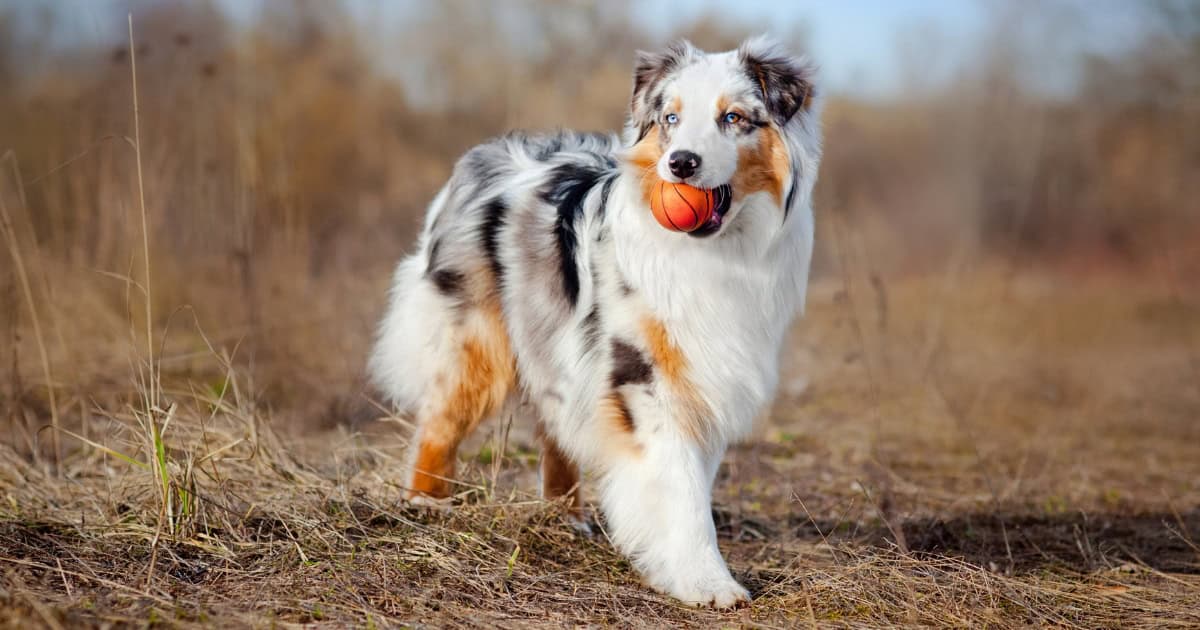
Despite his nickname the “Aussie”, the origin of the Australian Shepherd was based in Western US and was used to herd livestock.
This breed is popular worldwide, famous for it’s beautiful unique colourings and graceful, athletic nature.
These dogs are perfect for herding, competitive sports, or any owner willing to provide lots of exercise and training on a daily basis.
Definitely not a couch potato, these high energy dogs have excelled in a range of canine careers like assistant dogs or guide dogs.
He’ll work and play all day and provide endless amounts of companionship and love to the right family.
Australian Cattle Dog
 A breed well loved by Australians, this dog has been nicknamed the Blue Heeler for his beautiful coat and tendency to nip at the heels of his cattle.
A breed well loved by Australians, this dog has been nicknamed the Blue Heeler for his beautiful coat and tendency to nip at the heels of his cattle.
This dog is a true working dog, full of energy and devotion to his job. Traditionally used on farms to herd cattle, this breed suits an active family committed to sharing its upbeat lifestyle.
The herding history has bred an instinct to use force when herding, meaning that the dog has tendencies to bight – something to be aware of when it comes to training and early socialisation.
This breed is very devoted to their owners and can be protective and wary of strangers.
Australian Kelpie
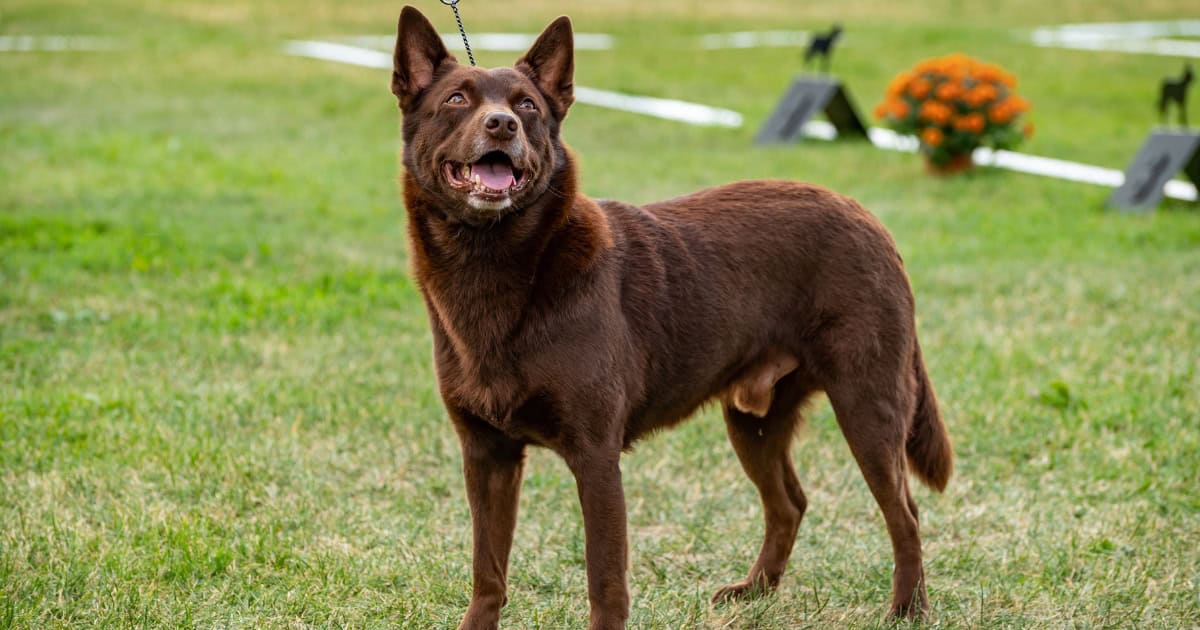 Another Aussie favourite, this dog breed is one of the smartest.
Another Aussie favourite, this dog breed is one of the smartest.
They can work for hours and are often found herding on farms. Their high intelligence and work ethic makes them a challenge to live with, and you need to be prepared to give plenty of exercise, obedience and agility training to keep them interested.
If not, they will become hyperactive and destructive.
These dogs learn quickly and make great escape artists so an escape-proof backyard is a must. Despite these challenges, kelpies are very popular and well loved by many families.
Basset Hound
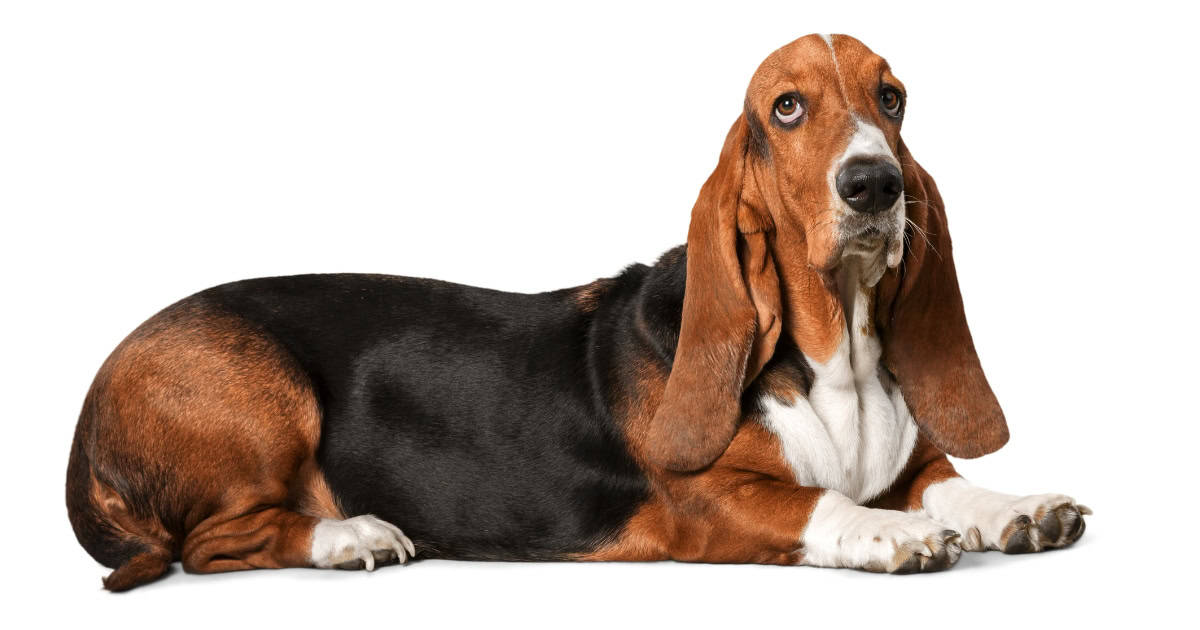
These sweet dogs are well known for their long ears, dopy faces and short legged bodies. Don’t be fooled by their short stature though, these dogs are bulky and can weigh up to 30kgs or 66 pounds.
Bassets live for food and will devour anything put in front of them, so regular exercise is a must to stay fit and healthy.
These dogs are a great family companion, calm and friendly with everyone they meet.
They typically do well with children and other animals due to their gentle nature and make a good choice for a family looking for a more lazy, calmer dog.
Belgian Malinois
 Originally bred in Belgium as a herding dog, this breed is a very intelligent dog that does well in all sorts of tasks.
Originally bred in Belgium as a herding dog, this breed is a very intelligent dog that does well in all sorts of tasks.
They’ve been used in herding, police work, search and rescue, and agility competitions.
They make a great choice for an owner looking for a dog to put to work, or who is committed to lots of daily exercise and training.
They’re very people-oriented and love to be included in family activities, particularly play time.
Their coat sheds quite heavily as well, something else to consider if you prefer a low-maintenance dog.
Bernese Mountain Dog
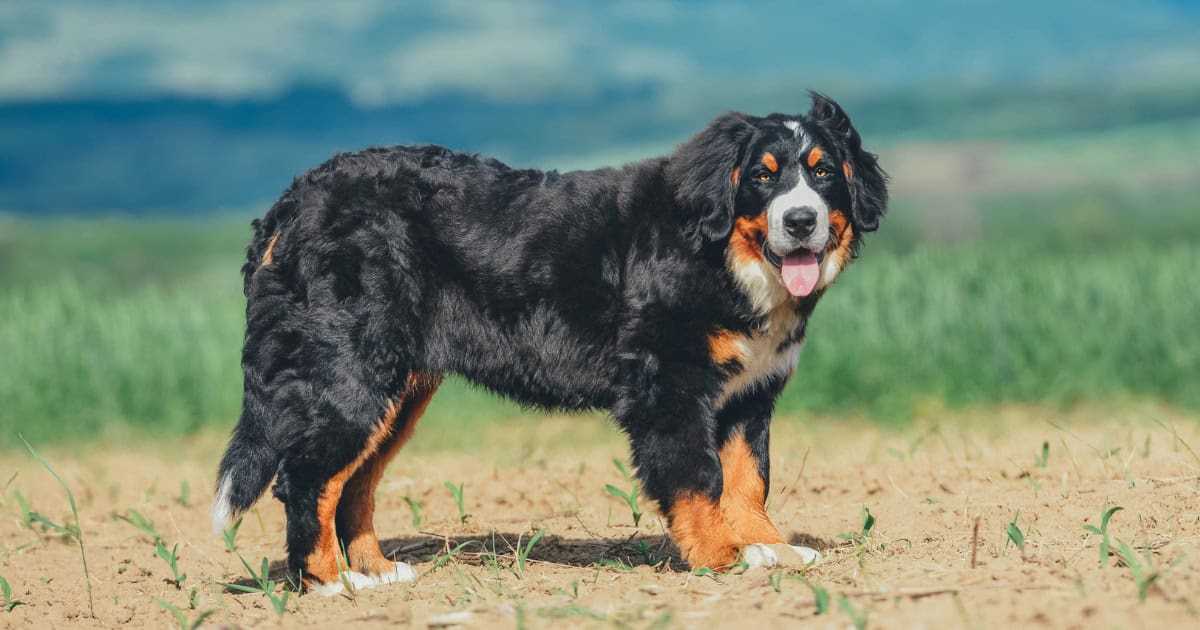 The origin of the Bernese Mountain Dog is on the farmlands of Switzerland, this dog was built for mountains.
The origin of the Bernese Mountain Dog is on the farmlands of Switzerland, this dog was built for mountains.
Despite this, the breed is extremely popular in Australia and owners need to be prepared to keep their dog cool in the warmer months.
It’s not just their beautiful fluffy coat that have made this dog so popular, it’s their wonderful temperament as well.
Berners are typically very easy to train, eager to please, and affectionate with the whole family.
Being a large dog, a big fenced backyard and lots of activities are necessary to keep them healthy and happy. Males weigh around 38 – 50 pounds while females weigh around 35-45 pounds.
Border Collie
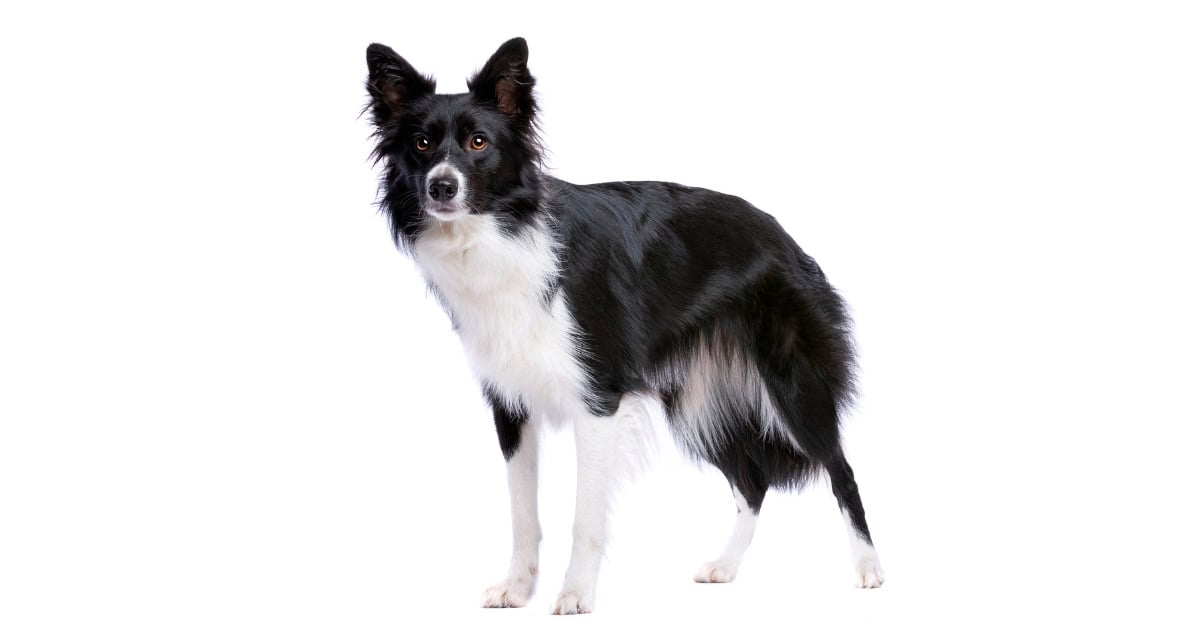 Another breed often found herding cattle on farms, Border Collies are famous for their work ethic and intelligence.
Another breed often found herding cattle on farms, Border Collies are famous for their work ethic and intelligence.
This dog isn’t a couch potato, he lives for activity and needs a job to do.
Owners need to be fully committed to keeping up with their physical and mental stamina.
If kept interested, these dogs are great to live with and make fantastic family companions.
They’re very easy to train and are very sensitive to their owners wants and needs.
With proper training, your Border Collie will excel in agility, obedience, flying disk, and many other activities.
Bouvier Des Flandres
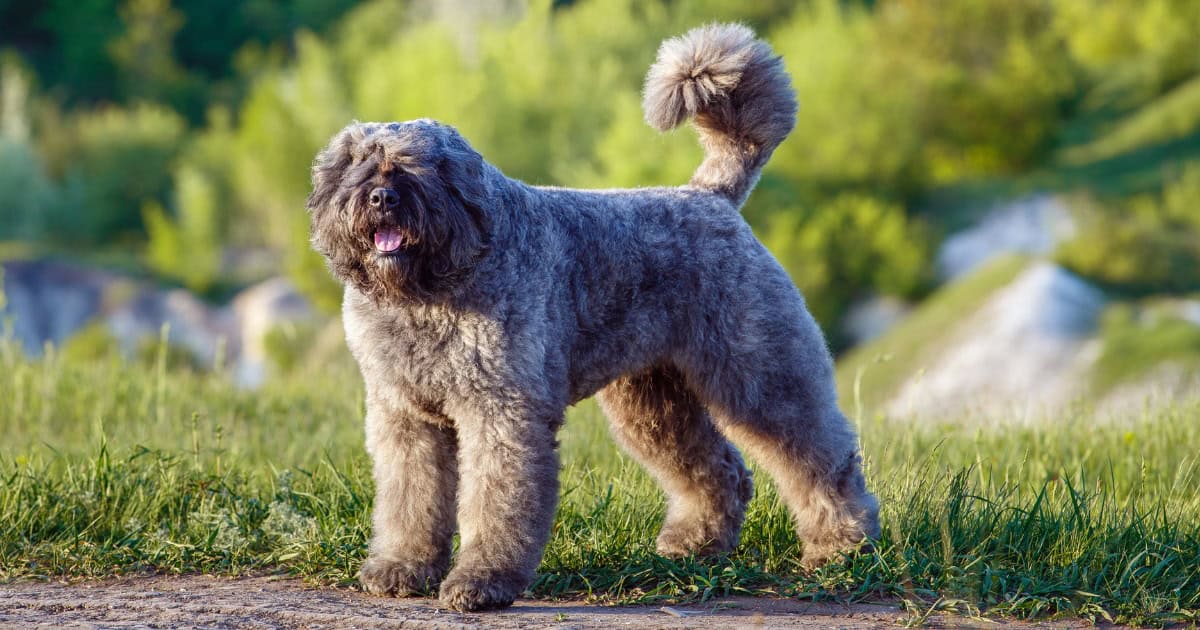 Hailing from Europe, Bouvier’s are powerful dogs originally bred for working. They’re intelligent and strong-willed, often very protective of their families.
Hailing from Europe, Bouvier’s are powerful dogs originally bred for working. They’re intelligent and strong-willed, often very protective of their families.
Their strong personalities need an owner that can establish leadership and deliver firm training.
They’re great athletes and do well with active owners who want to spend plenty of time with their dog.
While their coats don’t shed much, it’s very shaggy and dense so gets dirty quickly. Regular grooming a few times a week is needed.
Boxer
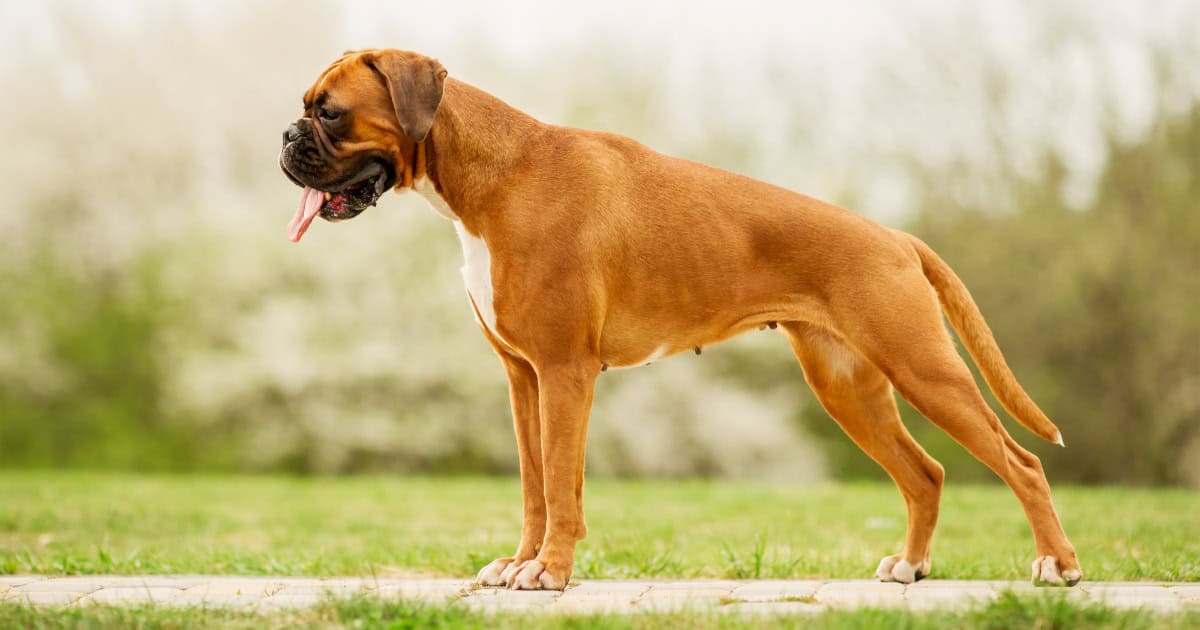 Boxers might look scary from afar, but you just need to get close to one to be smothered with puppy love.
Boxers might look scary from afar, but you just need to get close to one to be smothered with puppy love.
Very puppy-like and goofy, these dogs are great with families and love nothing more than enjoying life with their pack.
Their minimal grooming needs and huge amount of patience with children make them popular choices.
These dogs have high energy and need to enjoy lots of playtime and activity to keep them happy.
Boxers are above all committed to their families and need to be around them all the time.
They’re indoor dogs and need a family willing to keep them close always.
Bull Arab
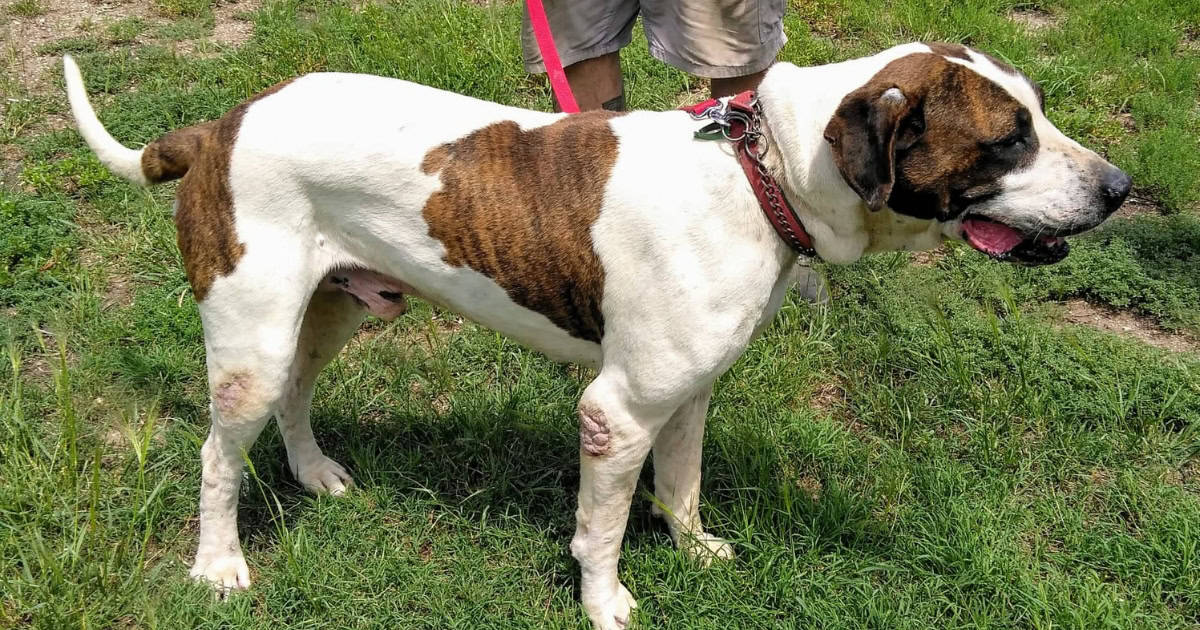 The origin of the mixed breed was firstly developed in Australia, Bull Arabs are part Bull Terrier, German Shorthaired Pointer, and Greyhound.
The origin of the mixed breed was firstly developed in Australia, Bull Arabs are part Bull Terrier, German Shorthaired Pointer, and Greyhound.
Originally built for pig hunting, this breed has been around for many years now and has become an Australian family favourite.
A well-built and muscular breed, these dogs are active and need regular exercise.
Bull Arabs do very well with kids and have a kind patience nature and are typically very affectionate and playful.
They have a sweet look and an easy to manage coat, though they do shed quite a lot.
Slovakian Wirehaired Pointer
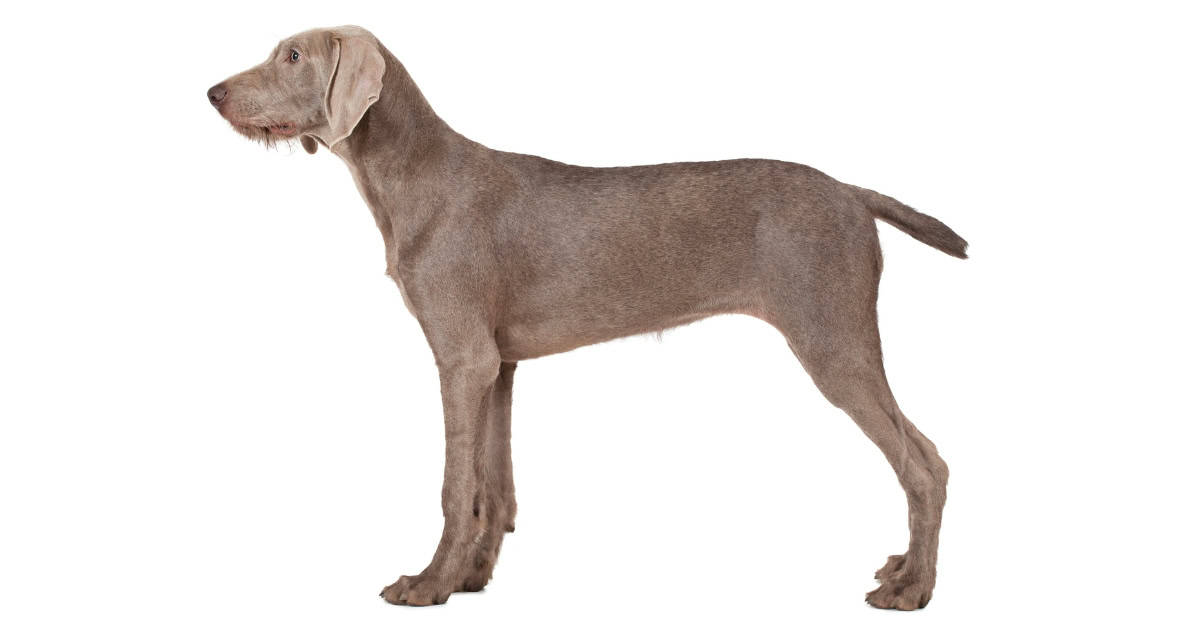
Slovakian Wirehaired Pointer is a dog of moderate strength, working type, but with nobleness in his lines.
The basic color of the coat is called “grey” and the hair is harsh (hard).
He must be fit and able to work on the plain, in the woods and in the water and especially to work after the shooting, searching and retrieving wounded game.
The Slovakian Wirehaired Pointer is obedient and easy to train and one of the largest dogs on this list.
Bull Terrier
 The origin of this breed is as a fighting dog, but fortunately is now more commonly found in families and as show dogs.
The origin of this breed is as a fighting dog, but fortunately is now more commonly found in families and as show dogs.
They are stereotyped as dangerous by people not aware of how sweet natured this breed really is.
Like all dogs, early socialisation is important to keep them friendly around other people and animals, and firm leadership needs to be displayed.
With proper training and plenty of love these dogs make for a very loyal, playful, and intelligent pet.
They thrive in the company of people and should be kept indoors with the family.
Bulldog

His name might instill an idea of ferociousness or fighting, but that couldn’t be further from the truth.
These dopy dogs are now more famous for their loveable and wrinkly skin.
You can get an English or American Bulldog, and both types have different looks.
While the breed is very courageous, they don’t pick out a fight and would rather spend their time cuddling with their owners.
Their muscular bodies and tendency to overeat means that regular exercise is crucial to keep them healthy.
Bulldogs can be stubborn or lazy when it comes to activity, so owners need to be firm.
Their snorting and snoring can also be a deterrent, but most owners find that it makes the breed even more endearing.
Bullmastiff
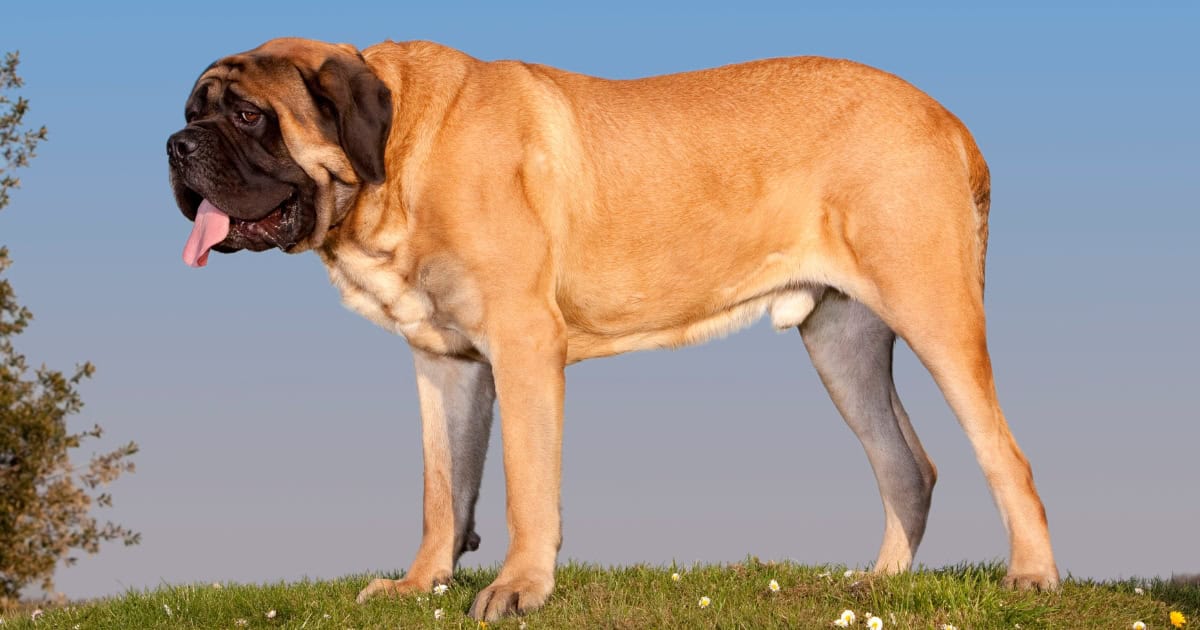 This breed is strong, noble, and fearless. Bullmastiffs formidable looks and courageous nature make them excellent watch dogs.
This breed is strong, noble, and fearless. Bullmastiffs formidable looks and courageous nature make them excellent watch dogs.
When they’re not faithfully protecting their family, they love to spend time with them relaxing or playing.
This breed isn’t a high energy dog but is still known to excel in obedience and agility training.
They’re calm enough to live in apartments as long as they receive enough exercise.
Bullmastiffs are very patient and gentle making them a great choice for families with children.
Despite being one of the largest dogs on this list and their muscular body, your bullmastiff will still think it’s a lapdog and spends most of its time cuddling with you. Males weigh around 50-60 kg while females weigh 45-55 kg.
Carpathian Shepherd Dog
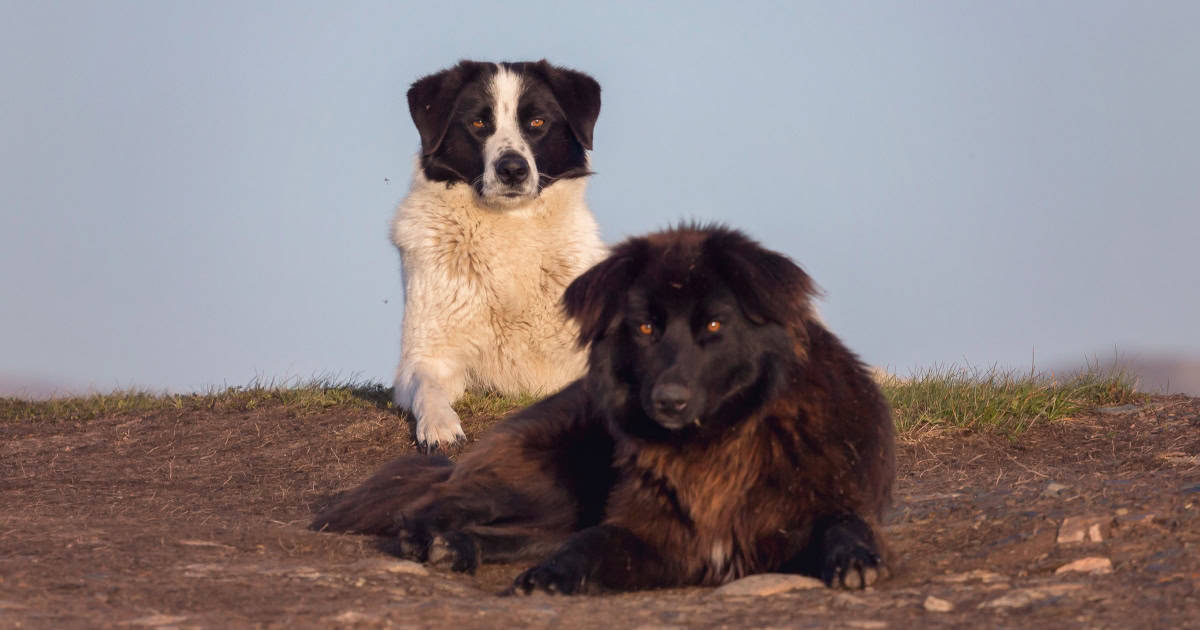 The Origin of the breed starts in the mountains of Romainia. These dogs have a beautiful fluffy coat and look almost wolf-like.
The Origin of the breed starts in the mountains of Romainia. These dogs have a beautiful fluffy coat and look almost wolf-like.
They’re very faithful and devoted towards their family and would protect with their life.
This loyal breed becomes very attached to its owners and doesn’t do well when left alone a lot.
Very well-mannered and gentle, Carpathians make great family pets and do well with children.
The breed is a good mix of guard dog, activity mate, and friendly companion.
They thrive in the country, or in big spacious backyards where they can play freely.
Catahoula Leopard Dog
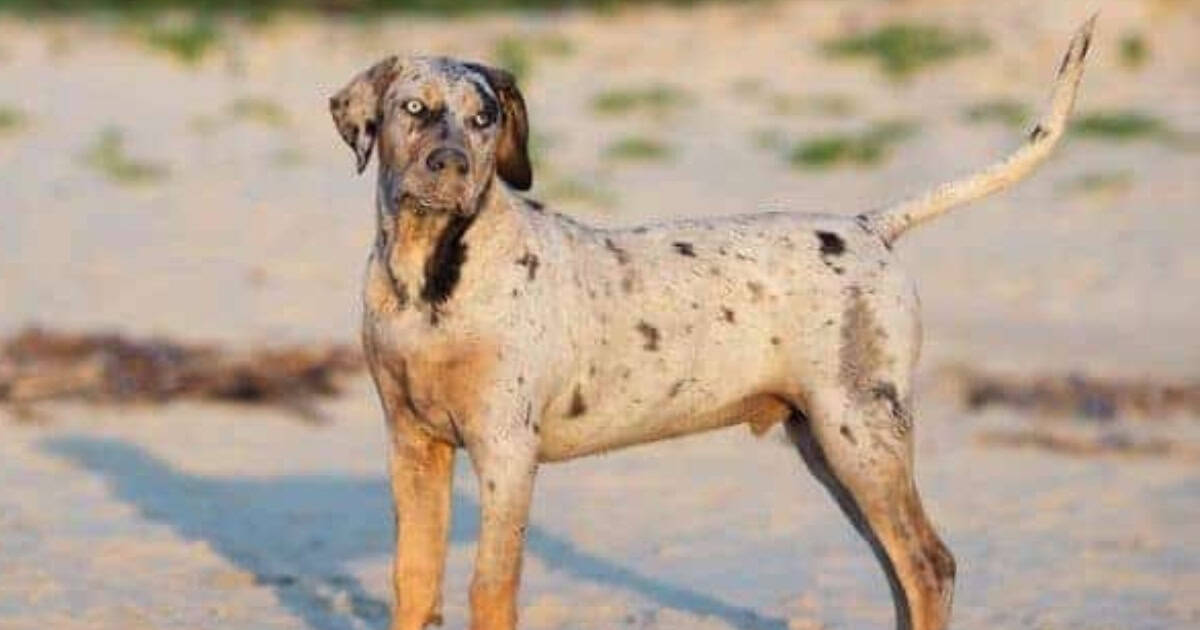 Photo sourced from AKC (American Kennel Club)
Photo sourced from AKC (American Kennel Club)
It’s easy to see where this breed got its name with its unique, spotty coat. These striking dogs have many different coat patterns, and often have two different coloured eyes.
Catahoulas are very affectionate and love companionship so they shouldn’t be left outside or alone often.
They’re a very intelligent breed, so you’ll need to be firm and give ongoing training to keep them in check.
They also require plenty of exercise, so best suit an active family who are experienced in owning dogs.
Early socialisation will ensure your Catahoula is friendly towards strangers and other animals.
Chow Chow
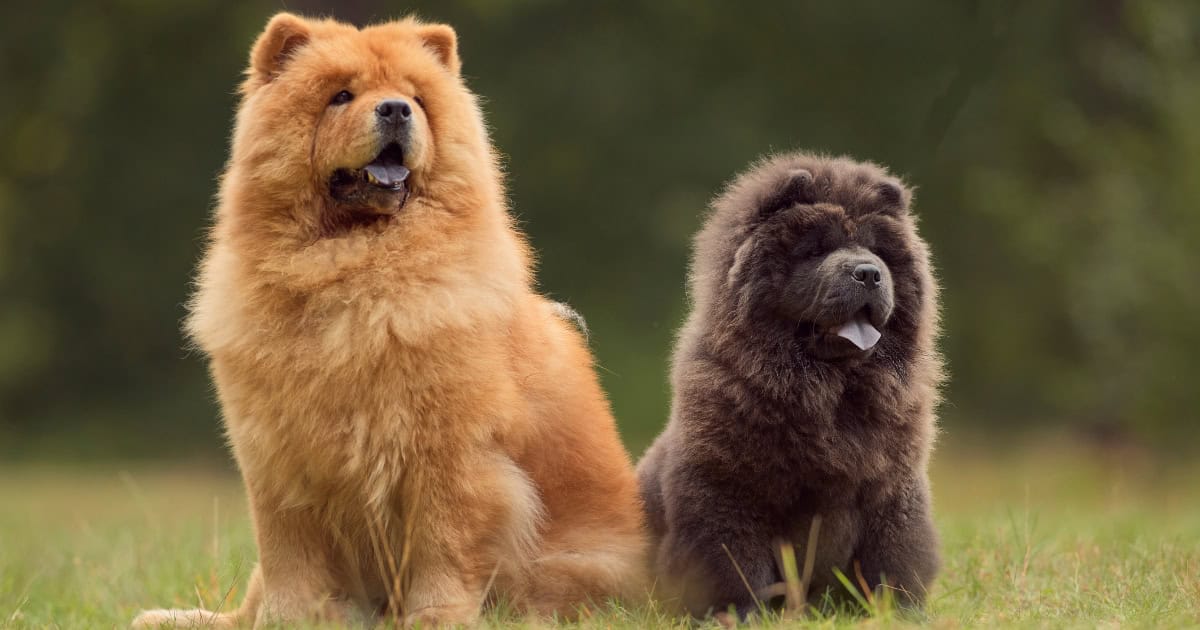 One of the worlds oldest dog breeds originating in Asia, these dogs look more like bears or lions with their huge fluffy bodies. Avoid this breed if you don’t like shedding.
One of the worlds oldest dog breeds originating in Asia, these dogs look more like bears or lions with their huge fluffy bodies. Avoid this breed if you don’t like shedding.
Chow Chows are independent and can be aloof. Socialisation is important so that they’re relaxed around others.
Despite their size, they can live in apartments as long as they get daily exercise.
They can be raised with children, but they don’t respond well to mishandling so its best to avoid the breed if you have small children.
Chow Chows are very proud so never use negative physical abuse when training, always stick to positive but firm reinforcement.
The breed has been known to become aggressive when mishandled.
Finnish Spitz
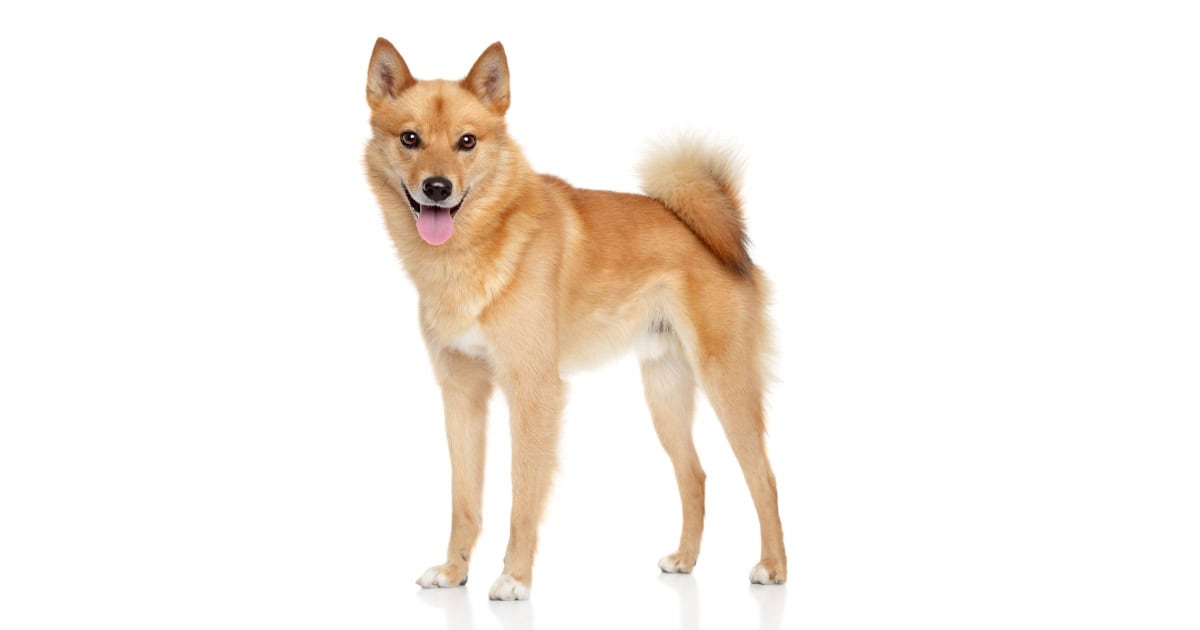 The Finnish Spitz Temperament is Friendly, Good Natured and Lively.
The Finnish Spitz Temperament is Friendly, Good Natured and Lively.
The lively Finnish Spitz, the flame-colored, foxy-faced breed from the “Land of 60,000 Lakes,” is a small but fearless hunting dog.
The balanced, squarely symmetrical Finnish Spitz will stand not more than 20 inches at the shoulder and are easily recognized by their foxy face and prick ears.
Collie
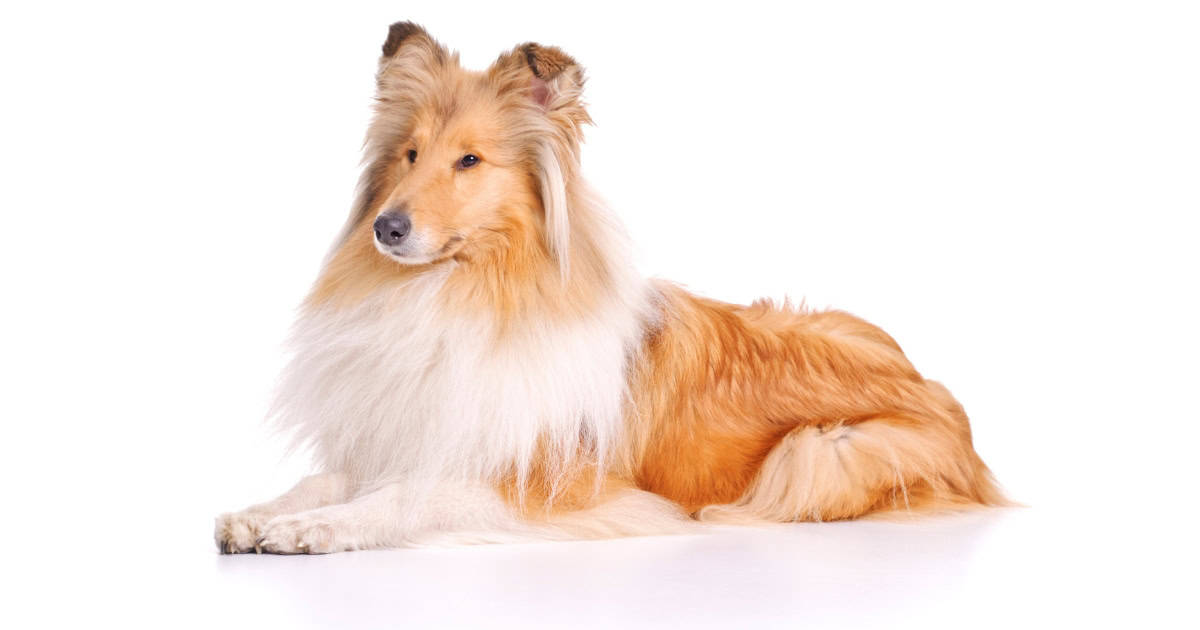 The trustworthy Collie was made famous by the television show Lassie. True to it’s TV representation, Collies are very intelligent and sensitive to the people around them.
The trustworthy Collie was made famous by the television show Lassie. True to it’s TV representation, Collies are very intelligent and sensitive to the people around them.
They’ll often pick up on their owners wishes or feelings. They can be suspicious of strangers and make a good watch dog, but Collies aren’t aggressive in nature.
They’re very friendly towards their family and excel as assistance or therapy dogs. Collies adapt to a variety of households, providing enough exercise is given.
There are two distinct looks for Collies: the full coat (rough) and the short coat (smooth). Both require regular grooming and shed a lot.
Dalmatian
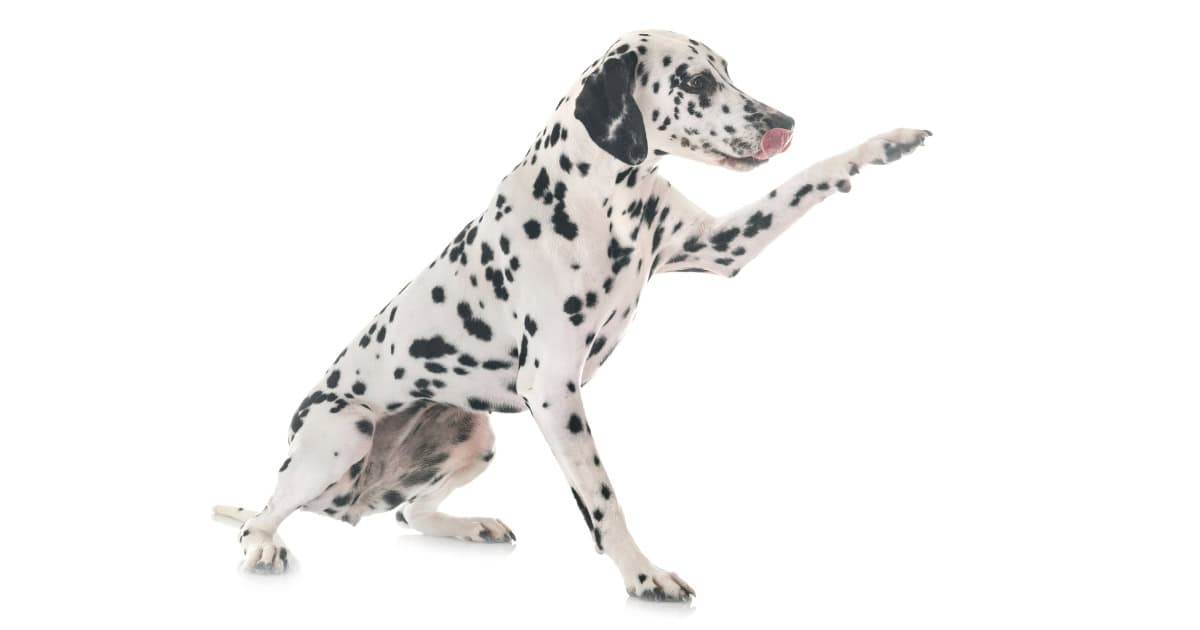 Made famous by the Disney movie 101 Dalmatians, it’s impossible to not recognise the Dalmatians black and white spotted coat.
Made famous by the Disney movie 101 Dalmatians, it’s impossible to not recognise the Dalmatians black and white spotted coat.
Their coats have a satin feel like velvet and shed a lot.
This breed is very intelligent and headstrong, so firm and consistent training is needed. They have high energy levels and can exercise endlessly.
Be prepared to engage in mental and physical activity every day to keep your Dalmatian happy and healthy.
Something else to be mindful of is that deafness is prevalent in the breed, and the trait can be passed down breeding lines.
They also have a unique urinary tract not like any other dogs, which has a few special requirements. The right vet will be able to help you navigate life with your Dalmatian.
Doberman Pinscher
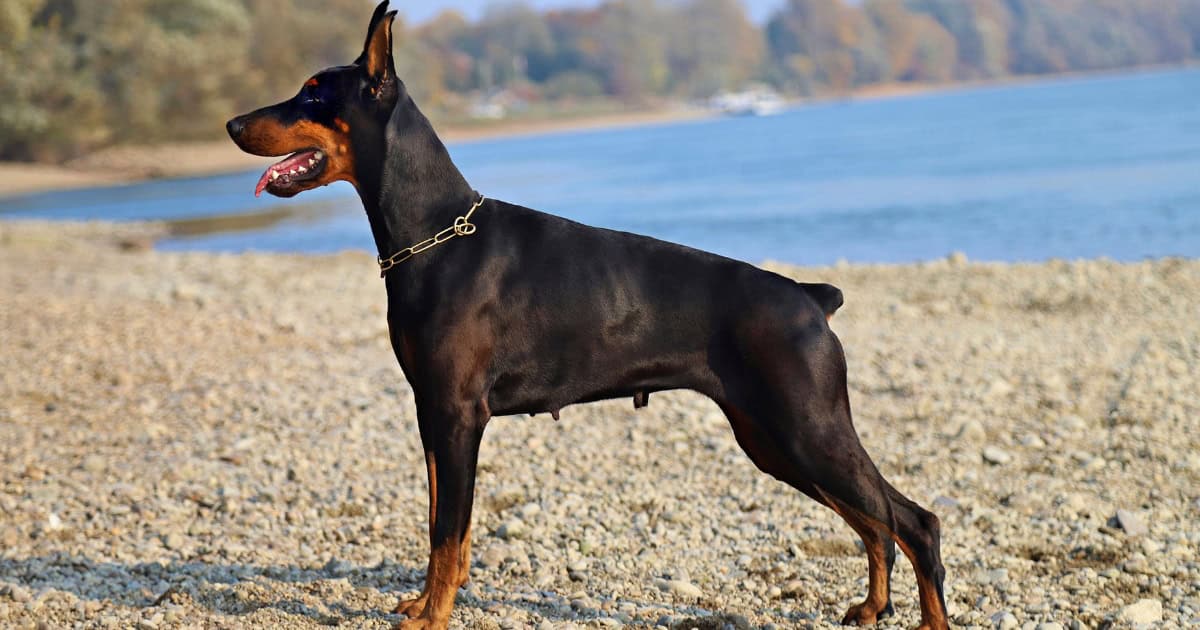 With a short black and tan coat, Dobermans were developed in Germany to be guard dogs.
With a short black and tan coat, Dobermans were developed in Germany to be guard dogs.
They have been stereotyped as aggressive because they are fearless when guarding. Typically, the breed is very loving and gentle though, and only defends their family if they perceive danger.
Their large size and high activity levels mean their only suitable for families willing to give plenty of exercise. They’re also very intelligent and need constant training and mental challenges.
For the right family, they’re very loyal and trustworthy and bond closely to their owners. One of the Largest Breeds on this list.
Dogue De Bordeaux
 Nicknamed the DDB, this breed is recognised by his huge and powerful body. One of the world’s largest breeds, they have thick, loose skin and a short fine coat.
Nicknamed the DDB, this breed is recognised by his huge and powerful body. One of the world’s largest breeds, they have thick, loose skin and a short fine coat.
They are typically very gentle and docile and are very loyal and devoted towards their family. This breed can be independent and stubborn though, so firm and patient training is needed.
They can also be territorial so because of their size, early socialisation is very important to prevent aggression towards strangers or other animals.
DDB’s are very loyal and make great guard dogs, as well as excelling in other activities like obedience and therapy work.
Dutch Shepherd
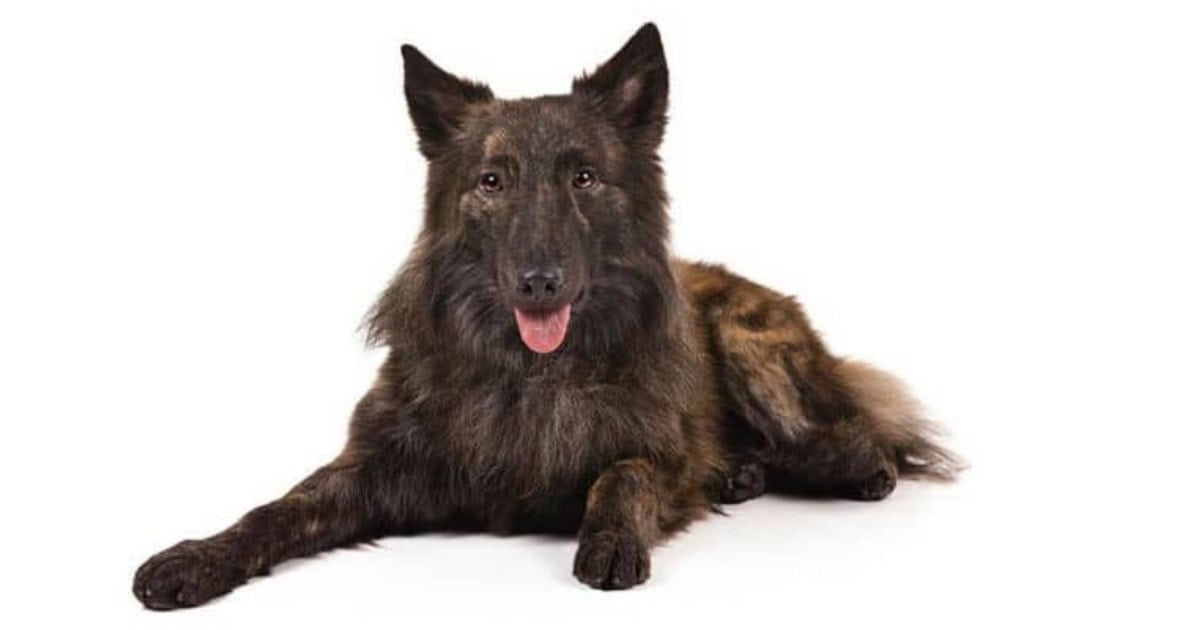 Photo sourced from AKC (American Kennel Club)
Photo sourced from AKC (American Kennel Club)
Closely resembling German Shepherds, the Dutch Shepherd was bred in the Netherlands for farm work.
This still rings true today, and these dogs are often working as police dogs, guide dogs, and obedience competitors.
They also make for great companions for active families. They can be kept in an apartment, so long as they get plenty of mental and physical exercise. If not, they can become bored and destructive.
Their coat keeps them comfortable in hot and cold climates, and unlike other Shepherd dogs they don’t have many health problems.
English Springer Spaniel
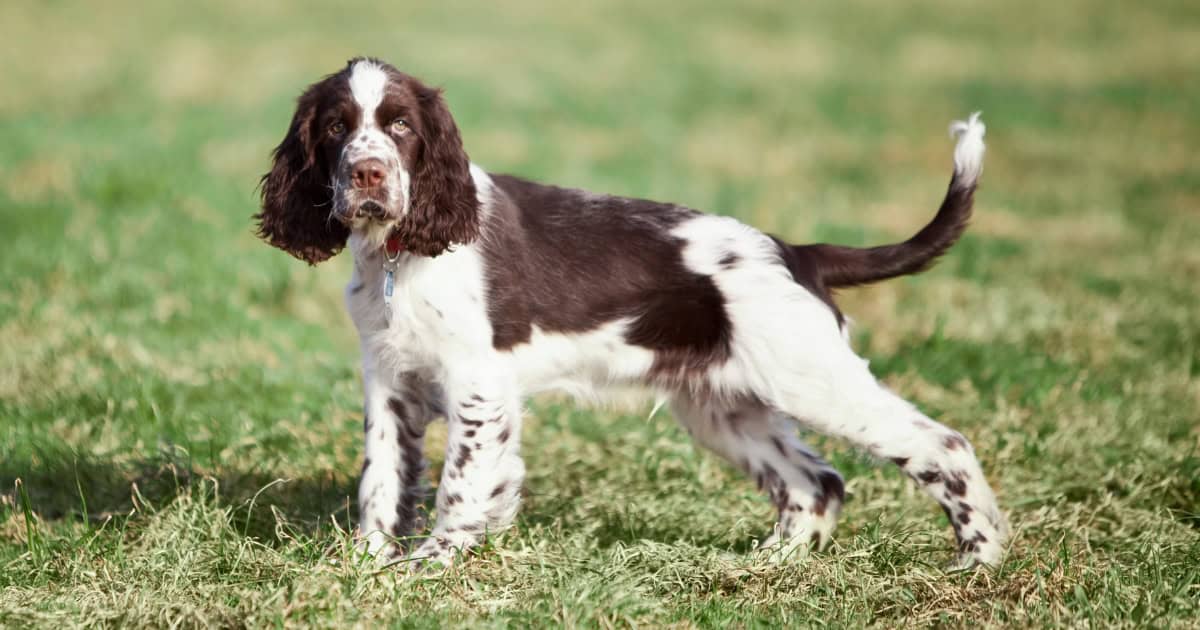 Like most Spaniels bred for hunting and sport, the English Springer is an enthusiastic and energetic dog.
Like most Spaniels bred for hunting and sport, the English Springer is an enthusiastic and energetic dog.
They’re medium sized, with a soft expression and a thick coat. English Springers are very cheerful, happy dogs and are very affectionate towards family and strangers.
They generally do well with other pets but might see birds as prey because of their hunting genetics.
These athletic dogs need a lot of exercise, and do well in agility, obedience, and tracking sports.
English Springers are very dependant on family company and shouldn’t be left home alone often.
Flat-Coated Retriever
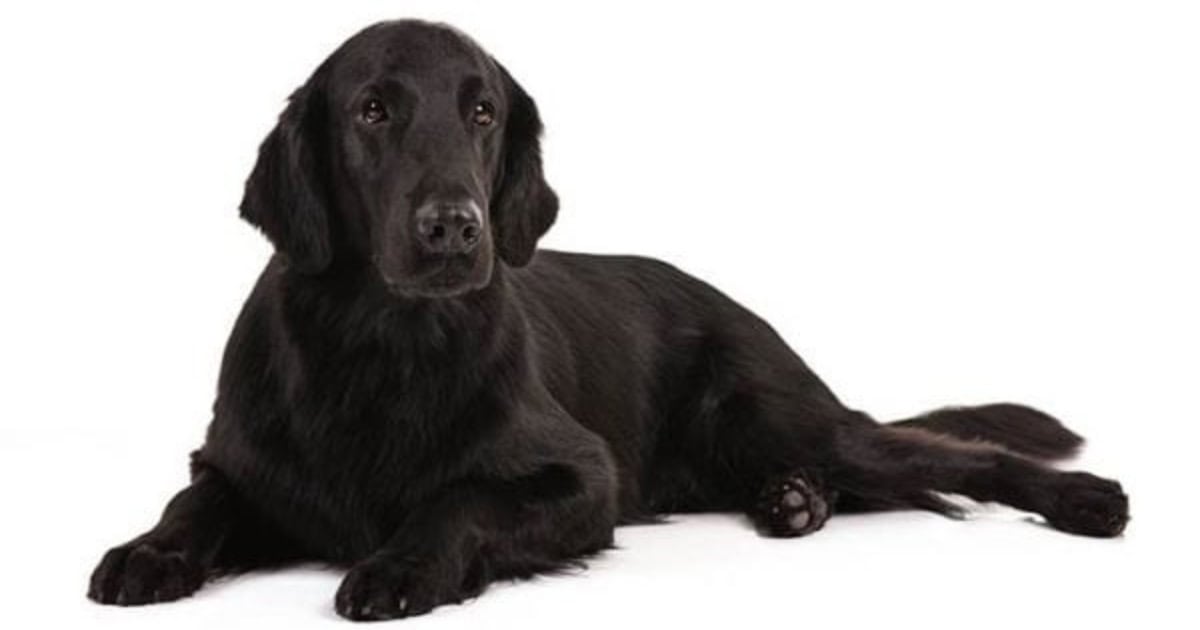
Photo sourced from AKC (American Kennel Club)
Nicknamed the “Peter Pan” of retrievers, these dogs are slow to mature and stay puppy-like for years. They resemble a black or brown Golden Retriever.
Because of their puppy nature, training can take more time and patience. They are eager to please but can be goofy, so firm training keeps them in check.
The most important thing is that Flat-Coated Retrievers get plenty of daily exercise and human companionship to keep them happy, healthy dogs.
German Shepherd
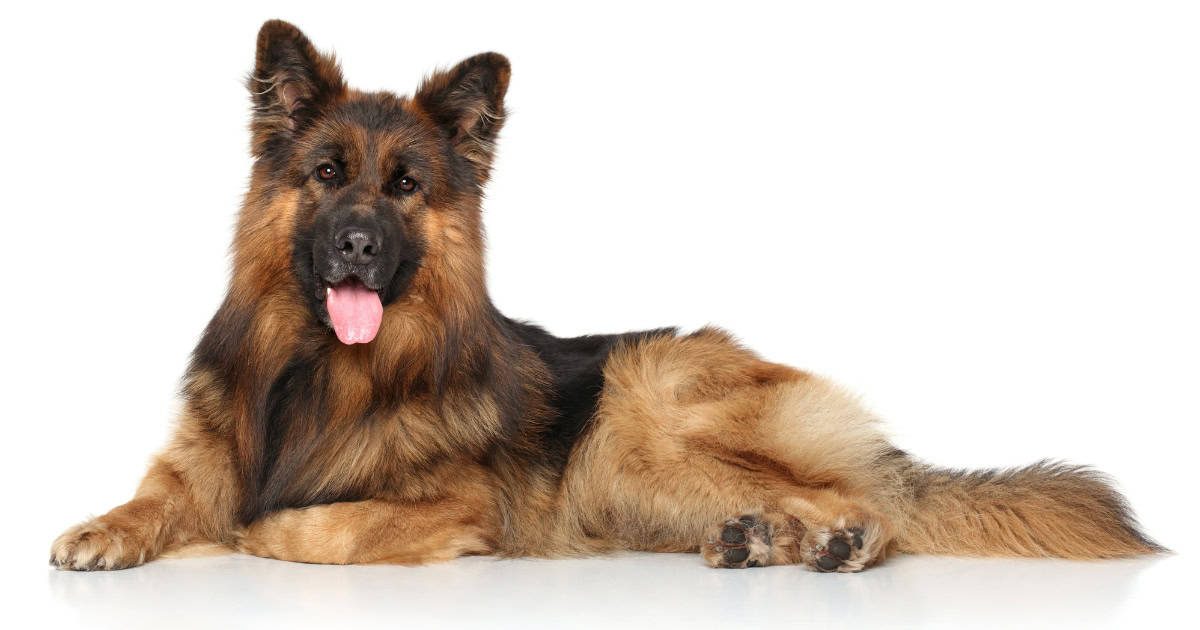 You’ve probably seen them looking formidable alongside Police, but German Shepherds are one of the most popular breeds in Australia. They’re very intelligent and easily trainable.
You’ve probably seen them looking formidable alongside Police, but German Shepherds are one of the most popular breeds in Australia. They’re very intelligent and easily trainable.
In fact, German Shepherds hold many jobs besides Police work, such as search and rescue, sniffer dogs, guide dogs, and herding. As you might expect, these dogs have very high energy levels and need lots of daily activity.
Separation anxiety is an issue with this breed if left alone also, they thrive on human companionship.
Nicknamed the “German Shedder”, these dogs shed constantly so expect to groom a few times a week.
German Shorthaired Pointer
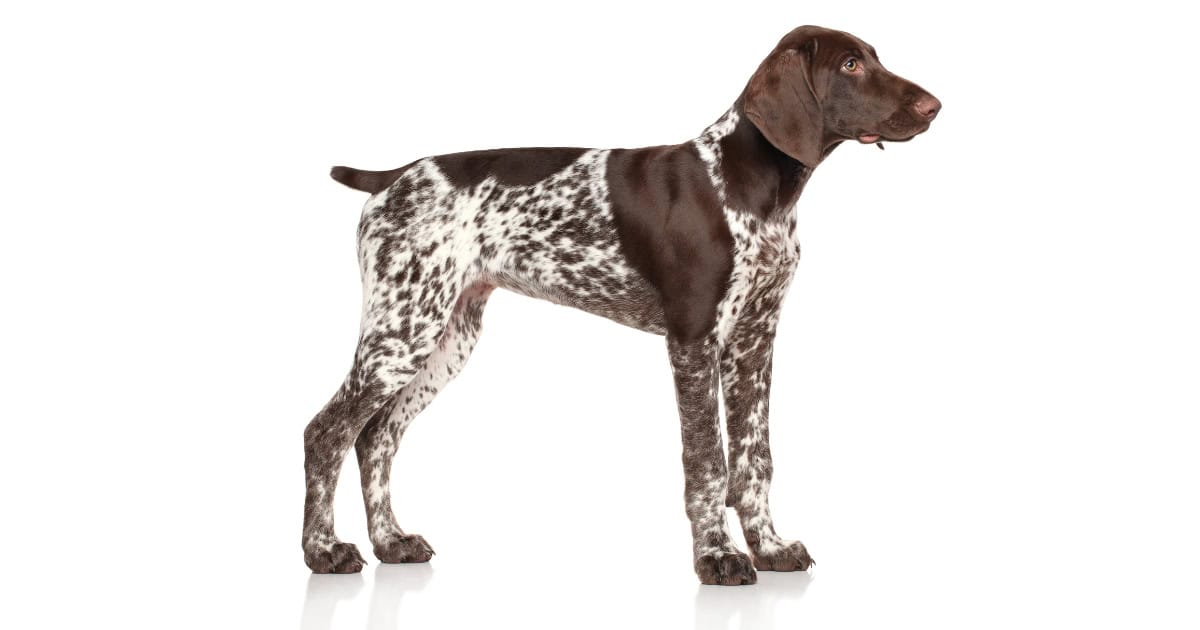 This stylish dog has a beautiful patched or spotted coat and dark almond eyes. The German Shorthair is a very adaptable dog, one that will run around with you all day and cuddle with you on the sofa at night.
This stylish dog has a beautiful patched or spotted coat and dark almond eyes. The German Shorthair is a very adaptable dog, one that will run around with you all day and cuddle with you on the sofa at night.
Like all sporting dog breeds, they do need plenty of exercise and make a great hiking or jogging companion. Expect to give an hour or two of activity daily.
They’re enthusiastic playmates and good with children, but their people-loving nature means they can’t be left alone for too long.
If bored, they can become destructive or escape artists – something to consider if they’re left alone for long periods.
Giant Schnauzer
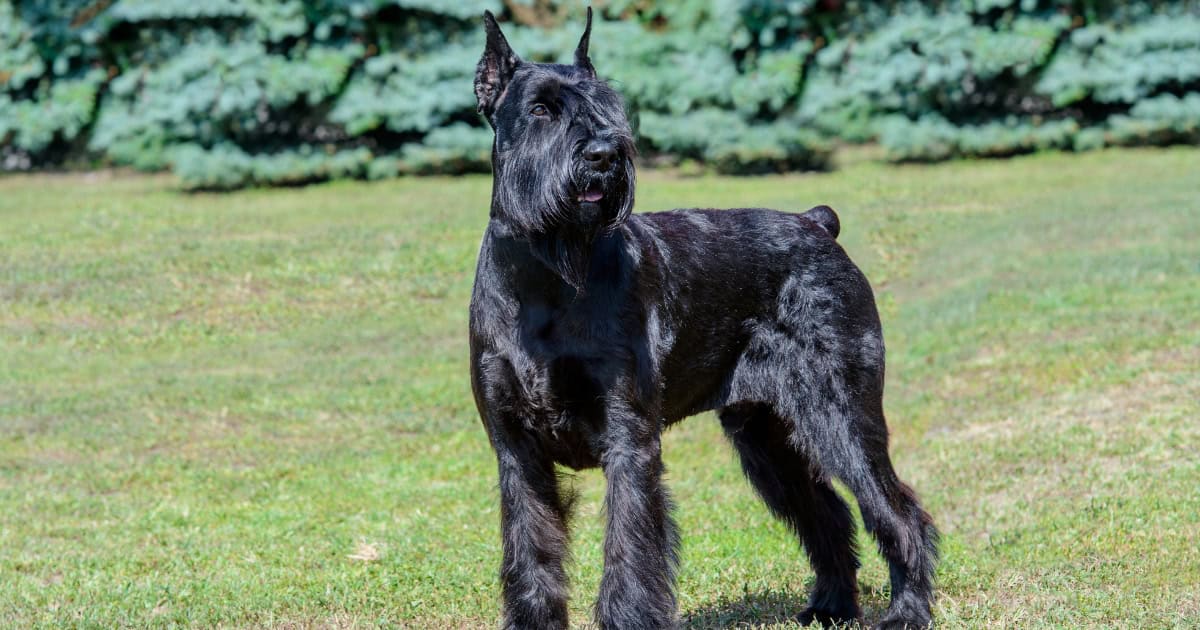 Regal and rugged looking, the Giant Schnauzer is the largest of the three Schnauzer breeds. Best known for their intelligence, this breed is very easy to train and can perform all sorts of tricks.
Regal and rugged looking, the Giant Schnauzer is the largest of the three Schnauzer breeds. Best known for their intelligence, this breed is very easy to train and can perform all sorts of tricks.
With this intelligence comes a need for keeping these dogs occupied, as they’ll become destructive if left alone or unexercised.
These dogs aren’t ideal for first time dog owners, they have a huge personality and their intelligence is a handful.
Their dominance also means they do best with older children over the age of 12. You’ll need to brush their long hypoallergenic coat a few times a week, and have it clipped to keep them neat.
Golden Retriever
 One of the most popular dogs in Australia, Golden really is a fitting name for this breed. Goldens are friendly dogs and are slow to mature, meaning you’ll have a puppy for many years.
One of the most popular dogs in Australia, Golden really is a fitting name for this breed. Goldens are friendly dogs and are slow to mature, meaning you’ll have a puppy for many years.
They’re loyal family dogs and need to be kept inside, companionship is crucial to keeping them happy. Their sweet, gentle nature has made them popular with families that have young children.
Golden Retrievers have a beautiful long golden coat that sheds a lot and needs daily brushing. Active dogs, they also require plenty of daily exercise and usually perform very well in obedience and agility training.
Great Dane
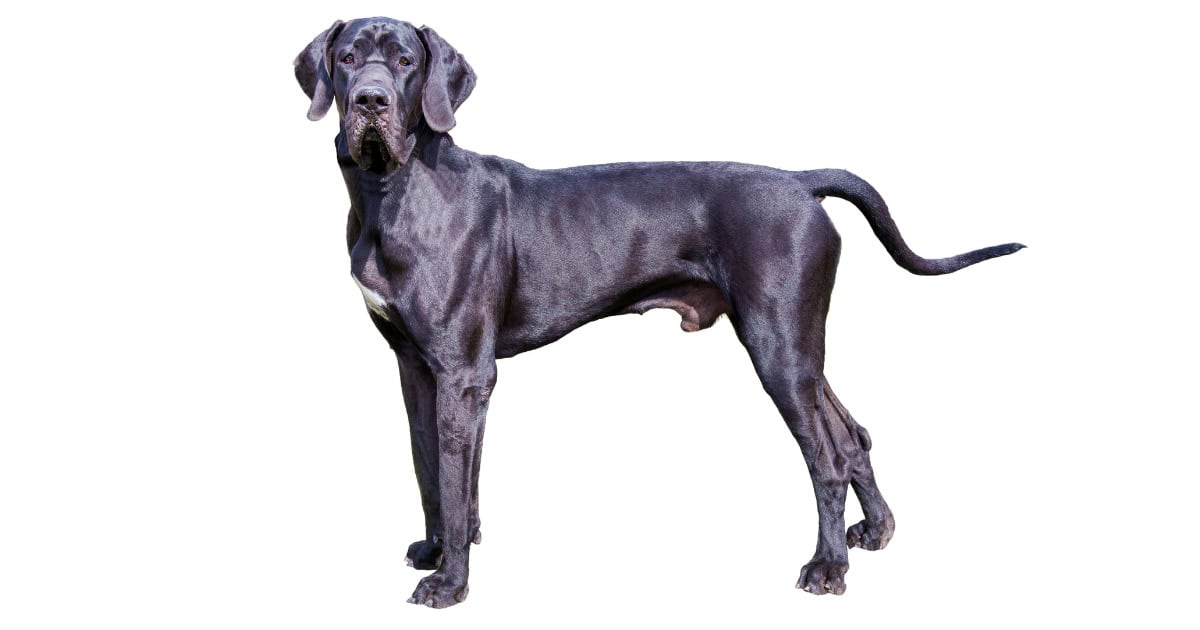 The tallest of all dog breeds, the Great Dane might surprise you with how sweet, gentle, and calm he is. Given their size, these dogs need a large space and can knock things over very easily. The Great Dane are one of the largest dog breeds on the list.
The tallest of all dog breeds, the Great Dane might surprise you with how sweet, gentle, and calm he is. Given their size, these dogs need a large space and can knock things over very easily. The Great Dane are one of the largest dog breeds on the list.
They should be kept inside when possible though, this breed is very people-oriented. They’re very affectionate dogs and are very gentle with children, being both a playmate and peaceful sofa companion.
Their mellow nature means they don’t need a lot of exercise, usually an hour a day will do. Like many giant dogs, Great Danes don’t have a long-life expectancy – usually around 8 years.
Great Pyrenees
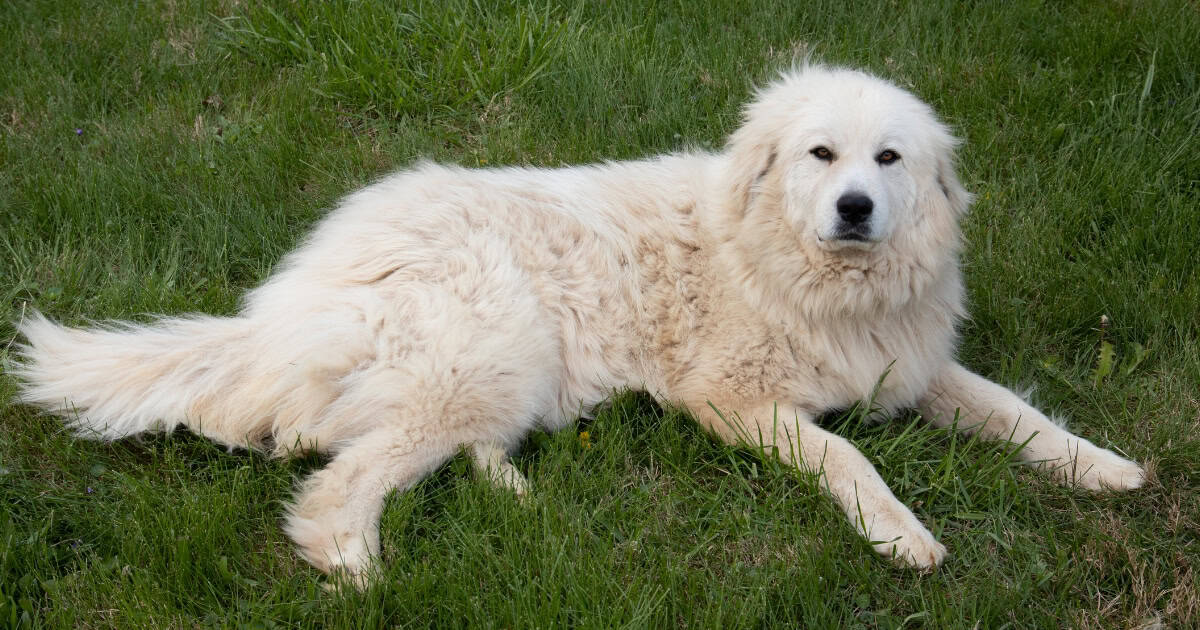 These white fluffy dogs originated in the European mountains and do best in cold weather. Big but calm, Pyrenees are very gentle towards smaller creatures.
These white fluffy dogs originated in the European mountains and do best in cold weather. Big but calm, Pyrenees are very gentle towards smaller creatures.
They become completely devoted to children, so are perfect for families.
The Great Pyrenees is a very intelligent dog, and constant training is necessary. If left untrained, these dogs can become uncontrollable simply because of their size.
They’re very courageous and protect the family at all costs.
Like all dogs, early socialisation is crucial so they’re calm around strangers.
This breed barks a lot – they have very sensitive hearing and because of their defensive nature they’ll bark at any sound.
Greyhound
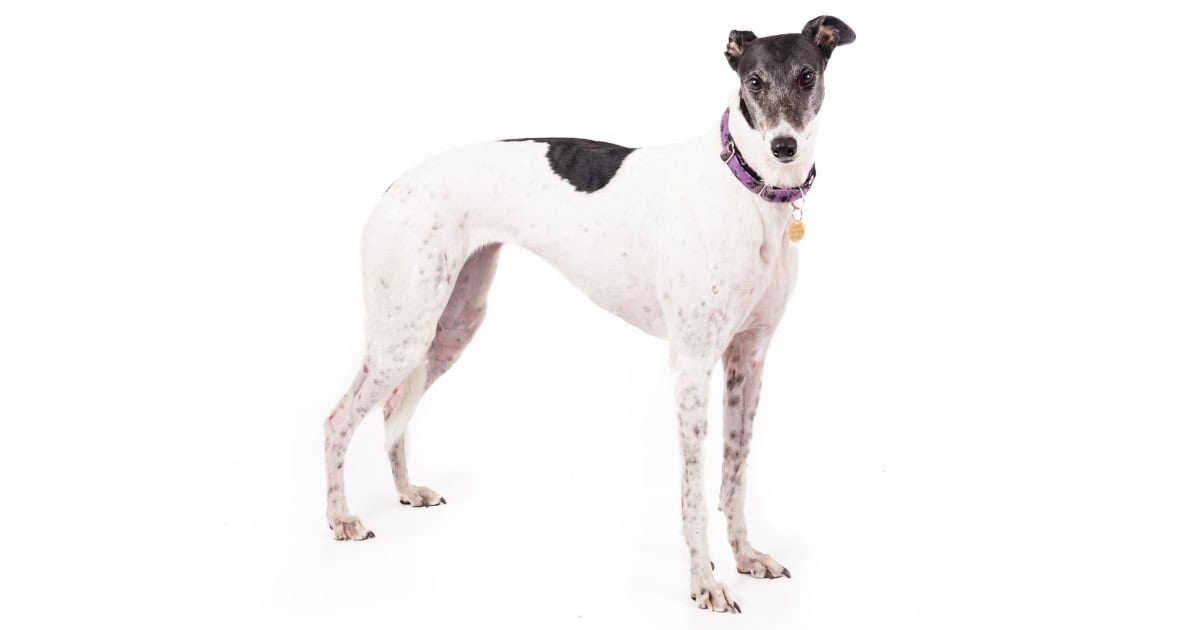 Reaching speeds of 70km per hour, Greyhounds are famous for their dog racing abilities. One of the more ancient breeds, these sleek dogs were loved by historical figures like Cleopatra and Queen Elizabeth I of England.
Reaching speeds of 70km per hour, Greyhounds are famous for their dog racing abilities. One of the more ancient breeds, these sleek dogs were loved by historical figures like Cleopatra and Queen Elizabeth I of England.
More recently, the breed has become a popular as racing or family dogs. They’re also common adoption choices as many racing dogs are abandoned later in life.
They might have a reputation for high energy levels, but Greyhounds would much prefer to sleep all day and do well in apartments or small homes.
Greyhounds do have a strong prey drive though, so a solid fence is needed to keep them from chasing after smaller animals. T
heir fine silver coat makes them very sensitive to cold weather, so your Greyhound will need to be kept inside in a warm house during the cooler months.
Irish Setter
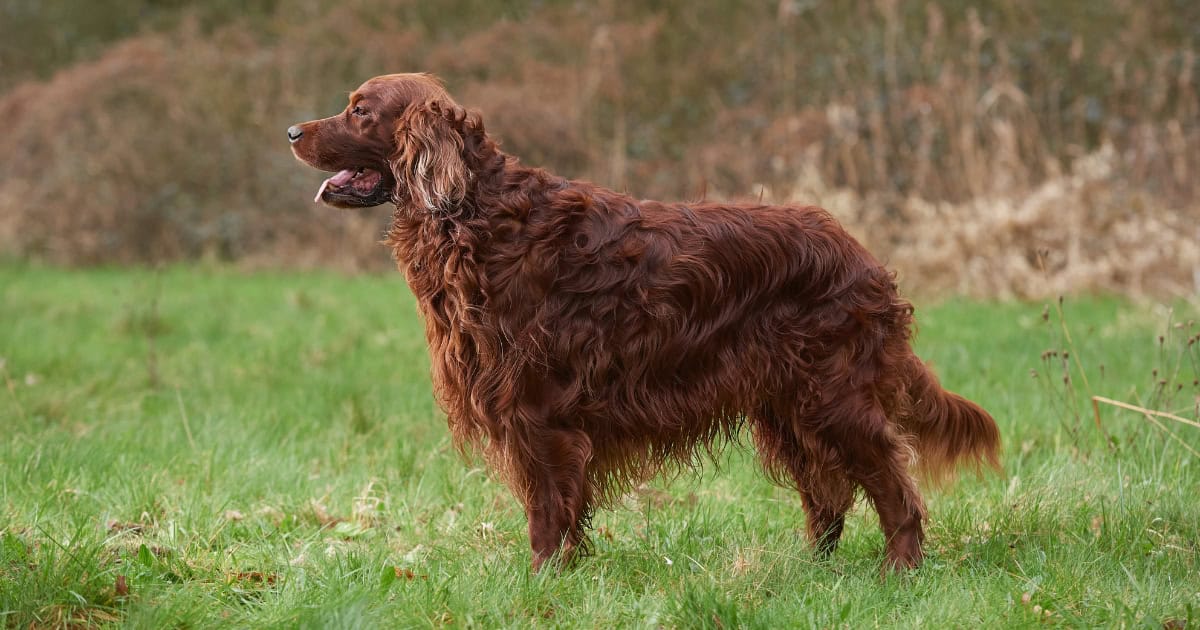 The redheads of the canine world, Irish Setters are fun-loving, cheeky, and playful dogs with a long mahogany coat. This outgoing breed loves everyone they meet.
The redheads of the canine world, Irish Setters are fun-loving, cheeky, and playful dogs with a long mahogany coat. This outgoing breed loves everyone they meet.
Setters are slow to mature so training can require more patience than usual.
They’re very affectionate and become very attached to their family. Like all companion dogs, they can’t be left alone for long periods of time or they might become anxious and destructive.
Irish Setters are very energetic, driven dogs and need daily exercise, as well as a large fenced yard to roam. This breed comes in two types: show or field dogs.
Show dogs are heaver and have a thicker coat, but both types require daily grooming and are moderate shedders.
Irish Water Spaniel
 On first glance you might mistake this breed for a Poodle. They have a thick curly coat that’s always a deep reddish brown.
On first glance you might mistake this breed for a Poodle. They have a thick curly coat that’s always a deep reddish brown.
Their low-maintenance coat sheds rarely and only require brushing a couple times a week.
True to their name, Irish Water Spaniels are strong swimmers and love water. Bred with hunting talents, this breed is very intelligent and energetic.
They’re eager to please and very trainable, but high energy levels need daily activity.
Irish Spaniels are quiet and devoted to their families, and do well with owners wanting an obedience, agility or rally competitor.
Irish Wolfhound
 The Irish Wolfhound is a gentle giant. They are the tallest dog breed in the world.
The Irish Wolfhound is a gentle giant. They are the tallest dog breed in the world.
They are known for being extremely docile and calm. Whilst their large size may look intimidating, they make terrible guard dogs and are not aggressive at all. They are good with children although should always be supervised purely due to their size.
Like many large dogs, they have a short life expectancy of only 6-8 years.
They were originally bred to hunt large game (including wolves).
Cocker Spaniel
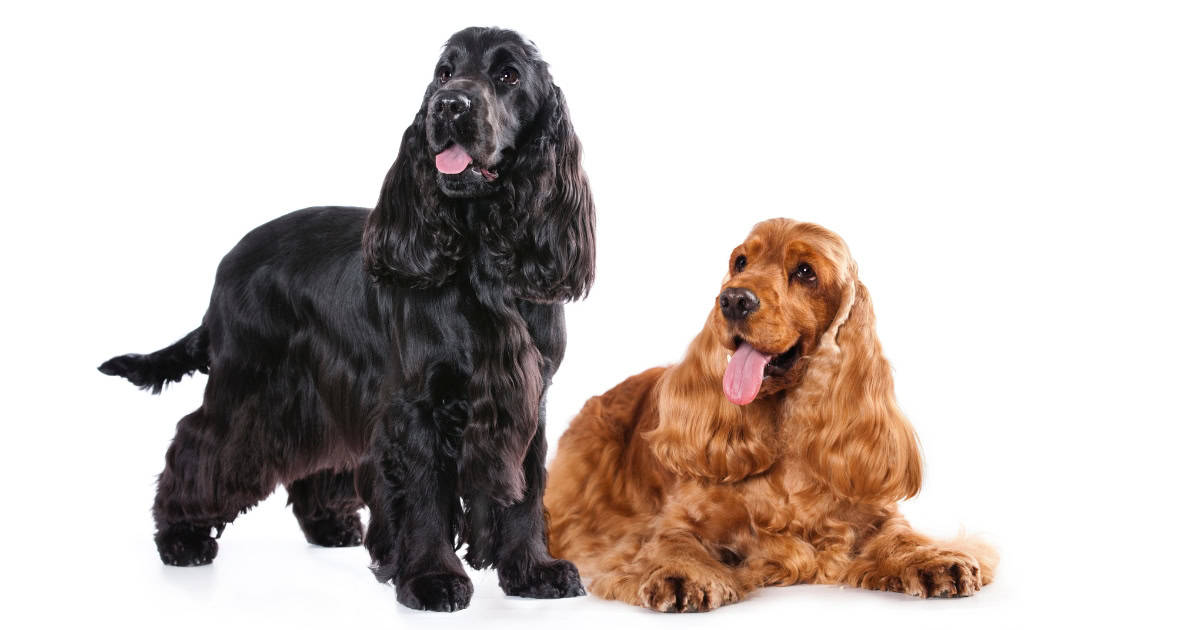 The Cocker Spaniel’s Temperament is Gentle, Smart and Happy.
The Cocker Spaniel’s Temperament is Gentle, Smart and Happy.
The merry and frolicsome Cocker Spaniel, with his big, dreamy eyes and impish personality, is one of the world’s best-loved breeds.
They were developed as hunting dogs, but Cockers gained their wide popularity as all-around companions.
The Cocker is the AKC’s smallest sporting spaniel, standing about 14 to 15 inches.
Japanese Akita
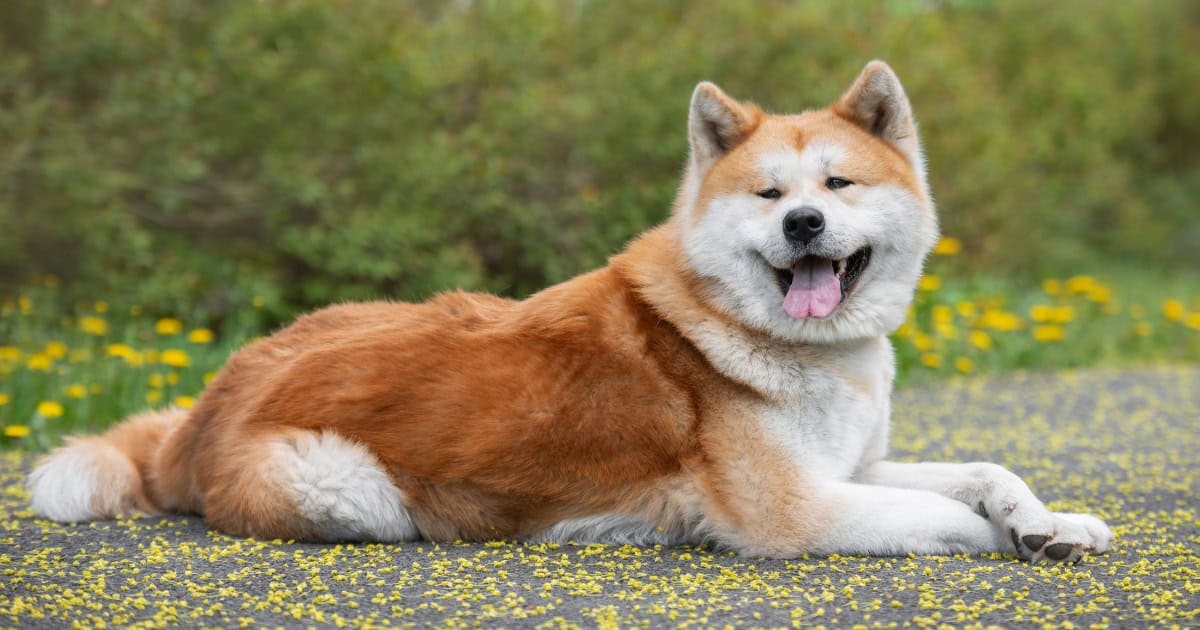 Large and powerful, the Akita was originally used for guarding royalty and nobility in Japan. They’re strong, fearless, and very loyal.
Large and powerful, the Akita was originally used for guarding royalty and nobility in Japan. They’re strong, fearless, and very loyal.
These traits make the Akita a great guard dog, but early and continued socialisation is important to ensure your dog is friendly towards strangers.
This breed is known to be aggressive towards other dogs, particularly same-sex aggression, so would be more suitable for a single pet household.
Akita’s have a dense fluffy coat that frequently sheds. They also have demanding training needs and aren’t recommended for first-time dog owners.
Canaan Dog
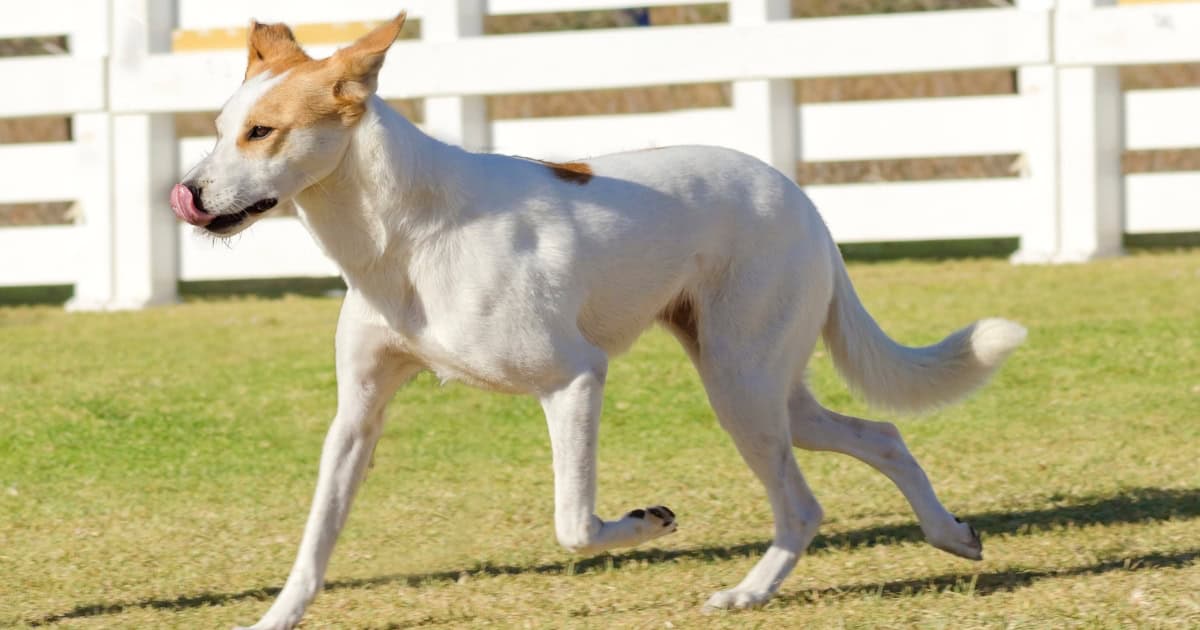 The Canaan Dog’s Temperament is Confident, Alert and Vigilant.
The Canaan Dog’s Temperament is Confident, Alert and Vigilant.
Canaan Dogs are lean, bushy-tailed dogs standing 19 to 24 inches at the shoulder.
The coat is straight and harsh, and comes in various colors and patterns. Erect, expressive ears and dark almond eyes convey an inquisitive expression.
Canaans move at a brisk, natural trot. They are rugged, agile, and apparently tireless, making them a nice fit for hikers and runners.
Koolie
 This Australian dog was bred to work, with high energy and endurance levels. Similar to other working breeds, Koolies try to herd anything that moves, and do very well on farms. Outside of farms, Koolies excel in competitive dog sports and as family companions.
This Australian dog was bred to work, with high energy and endurance levels. Similar to other working breeds, Koolies try to herd anything that moves, and do very well on farms. Outside of farms, Koolies excel in competitive dog sports and as family companions.
They’re generally very friendly towards people and other animals, particularly with children. Koolies crave companionship and shouldn’t be isolated from their family. T
hey best suit owners who are home most of the day or who can take their Koolie to work with them. Due to their activity levels, a large backyard and daily exercise is highly recommended. Their relatively low-maintenance short coat needs little attention but does shed on an average basis.
Komondor
 Resembling a mop, these rare dogs have long feltlike white cords. Their coat doesn’t need brushing but must be kept clean and separated regularly to avoid matting.
Resembling a mop, these rare dogs have long feltlike white cords. Their coat doesn’t need brushing but must be kept clean and separated regularly to avoid matting.
Under all that hair, Komondors have a big personality and love to guard over their family.
They’re highly protective so early socialisation is important to avoid aggression towards strangers. They can also be aggressive towards other dogs, but usually do well with cats and livestock.
Because of their working dog heritage, Komondors are very intelligent and requires an owner committed to ongoing training.
They’re happiest when working, so a job or regular training will give them the mental exercise they need.
Labradoodle
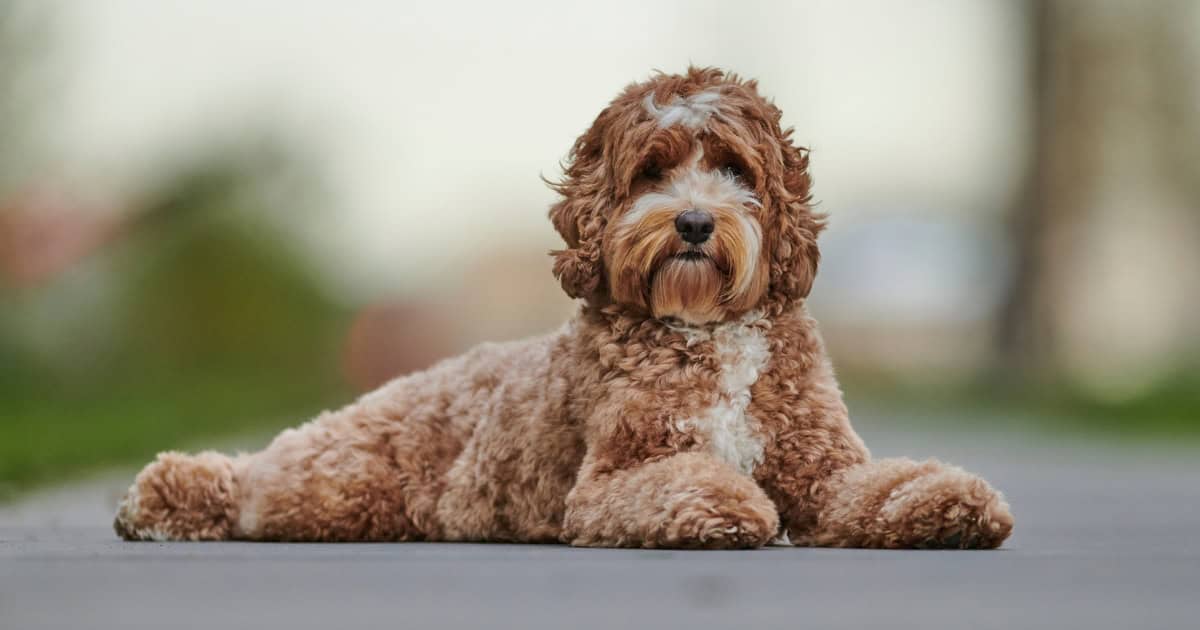 While we’re focusing mainly on purebred breeds in this list, we can’t leave out the beloved Labradoodle.
While we’re focusing mainly on purebred breeds in this list, we can’t leave out the beloved Labradoodle.
Mixed with the Poodle and Labrador, this breed was created in Australia and remains one of the most popular dog choices.
Labradoodles love people and are very affectionate and loyal. They need to be kept close to family and should never be isolated in a backyard.
These dogs live to please and are very intelligent, so training comes quite easily.
They’re very excitable, exuberant dogs and require daily exercise to keep them healthy and happy.
Labrador Retriever
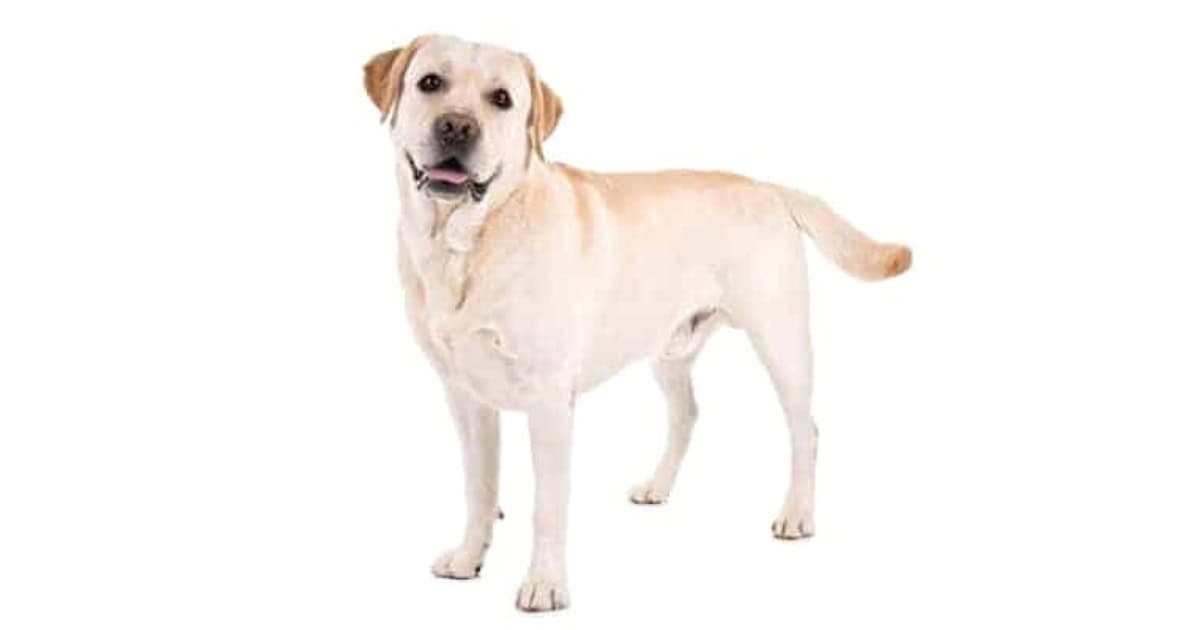
Photo sourced from AKC (American Kennel Club)
Ranked as the number one most popular dog breed in Australia, Labradors are the definition of “mans best friend”.
Warm and devoted, this loyal breed lives to serve their families.
Their intelligence and high energy have made them excellent working dogs, excelling at agility, search and rescue, or hunting.
They also excel as therapy and guide dogs.
Their love for people have made them hopeless watch dogs, your Labrador will just demand pats and cuddles from any intruder.
These dogs never stop eating and have been known to devour anything they can, including inedible items like socks.
They can become obese very quickly if overfed. A balanced diet and regular exercise will keep your Labrador healthy.
Their blonde or brown short coat sheds frequently.
Carolina Dog
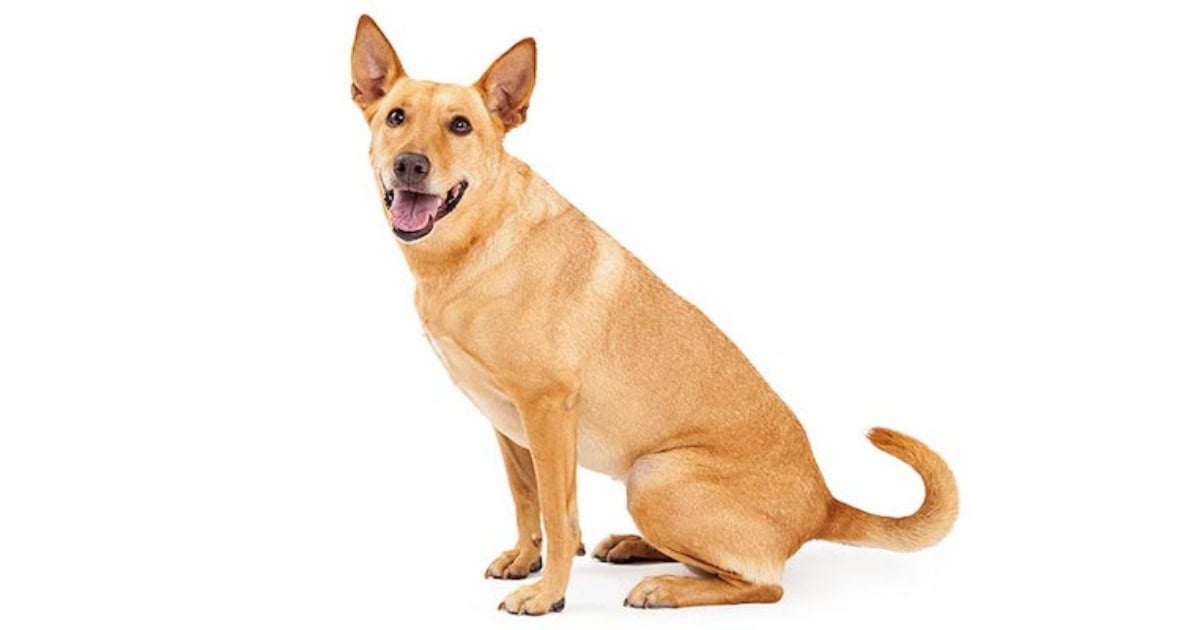
Photo sourced from AKC (American Kennel Club)
The Temperament of the Carolina is Loyal, Independent and Reserved with Strangers.
Carolina Dogs are generally shy and suspicious in nature, but once a dog accepts a human into its pack, those behaviours disappear toward that human.
A sighthound of medium build, they have the general appearance of a jackal or wolf.
The typical Carolina dog has pointed ears, a fox-like snout and a tail that curves like a fishhook when it is raised.
Lagotto Romagnolo
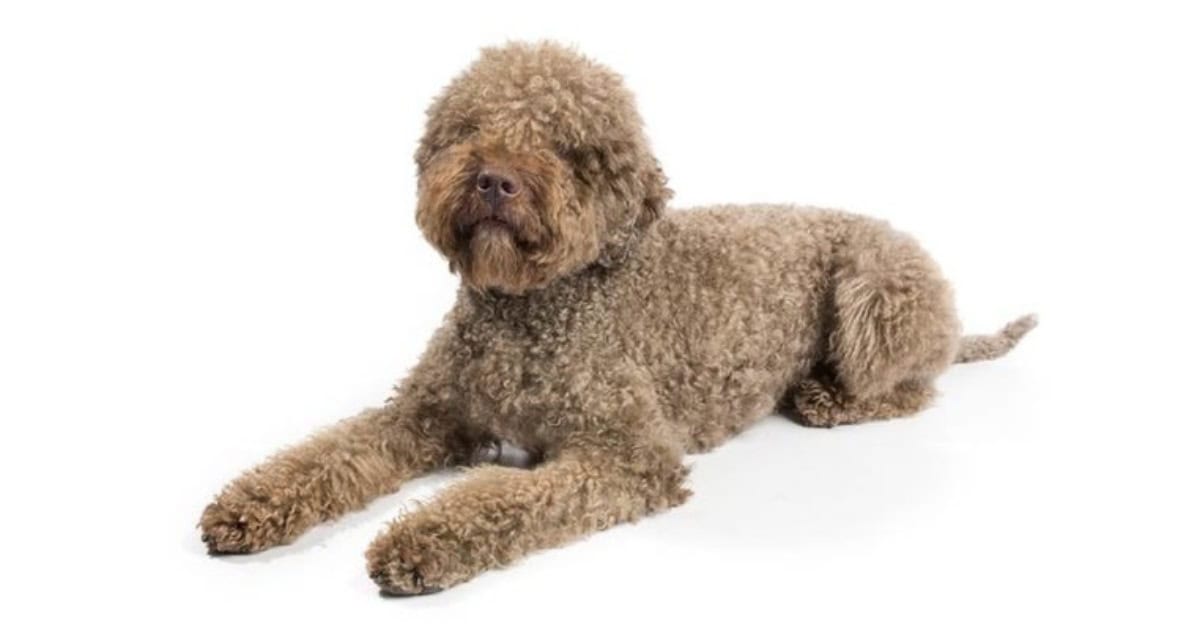
Photo sourced from AKC (American Kennel Club)
Lagotto Romagnolos are loved for their curly, cuddly coat and affectionate nature. They are like a big teddy bear!
They have a thick, double coat which is waterproof and will shed minimally. They do tangle easily and will need to be groomed regularly.
Lagotto Romagnolos love to spend time being active with their owners. They thrive in agility and obedience events.
The breed originated in Italy. They were originally bred as working dogs to sniff out truffles. They are also known as the Romagna Water Dog and are believed to be the ancestor of all water dog breeds.
Maremma Sheepdog

Photo sourced from AKC (American Kennel Club)
Native to Italy, these large dogs have a fluffy white coat and were originally bred to guard against wolves and bears.
In modern times they’re often used as livestock guardians. In Australia they’re even used to guard Little Penguins from foxes.
They have a natural protective instinct and are typically suspicious of strangers. Maremma Sheepdogs are very loyal to their family though and make excellent watch dogs.
Because of their breeding, Maremma Sheepdogs aren’t ideal as family pets and require socialisation and training to make them so.
Their independence does make them generally harder to train though, so you’ll need to be firm and consistent.
Mudi
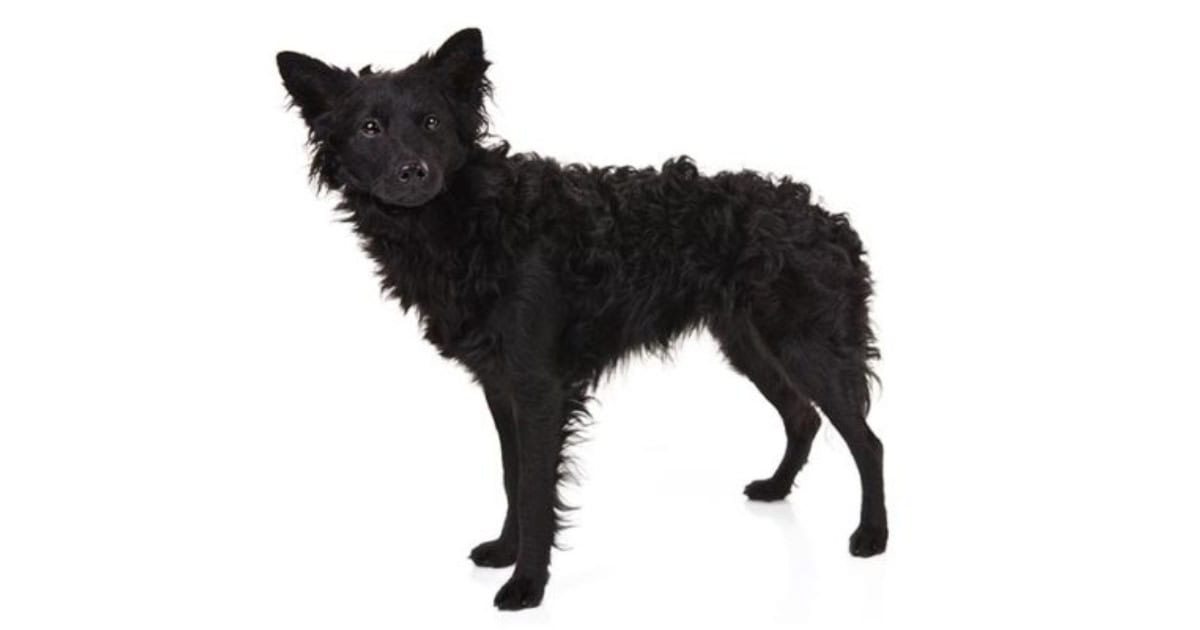
Photo sourced from AKC (American Kennel Club)
The Mudi (pronounced ‘Moodie’) is a rare breed. The majority of Mudi are found in Hungary and Finland, with a few scattered across Europe and other parts of the world.
They were originally bred is 19th century Hungary as a working dog. They were used on farms to herd livestock. They are still used for this as well as being search and rescue animals.
They are an active and smart breed that needs a lot of exercise. They are protective of their humans but rarely aggressive.
Their scruffy coat requires minimal grooming. They can come in black, grey, grey brown, brown, white or yellow. They can have a solid coat or merle markings.
Newfoundland
 Affectionately nicknamed “Newfie”, this dark-coloured fluffy breed has many fans worldwide. Originally from Canada, these dogs are huge and definitely need a bit of space at home.
Affectionately nicknamed “Newfie”, this dark-coloured fluffy breed has many fans worldwide. Originally from Canada, these dogs are huge and definitely need a bit of space at home.
They’re mellow and placid, but like all dogs they need daily exercise.
They have a strong work ethic though and need mental stimulation, so perfect for an owner committed to ongoing training and sports.
People who aren’t fans of drooling should steer clear, Newfies are serial slobbers.
They’re very sweet dogs and are typically very gentle. They’re a giant loveable teddy bear and do best in loving homes surrounded by family.
Cocker Spaniel
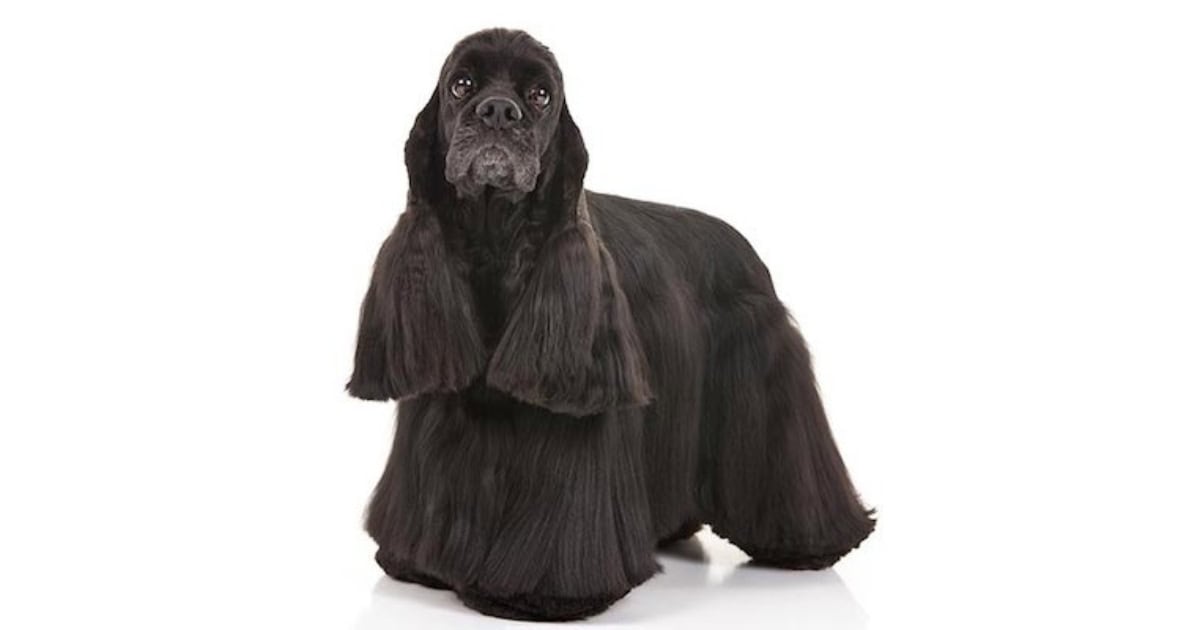
Photo sourced from AKC (American Kennel Club)
The Cocker Spaniel’s Temperament is Gentle, Smart and Happy.
The merry and frolicsome Cocker Spaniel, with his big, dreamy eyes and impish personality, is one of the world’s best-loved breeds.
They were developed as hunting dogs, but Cockers gained their wide popularity as all-around companions.
The Cocker is the AKC’s smallest sporting spaniel, standing about 14 to 15 inches.
Norweigan Elkhound
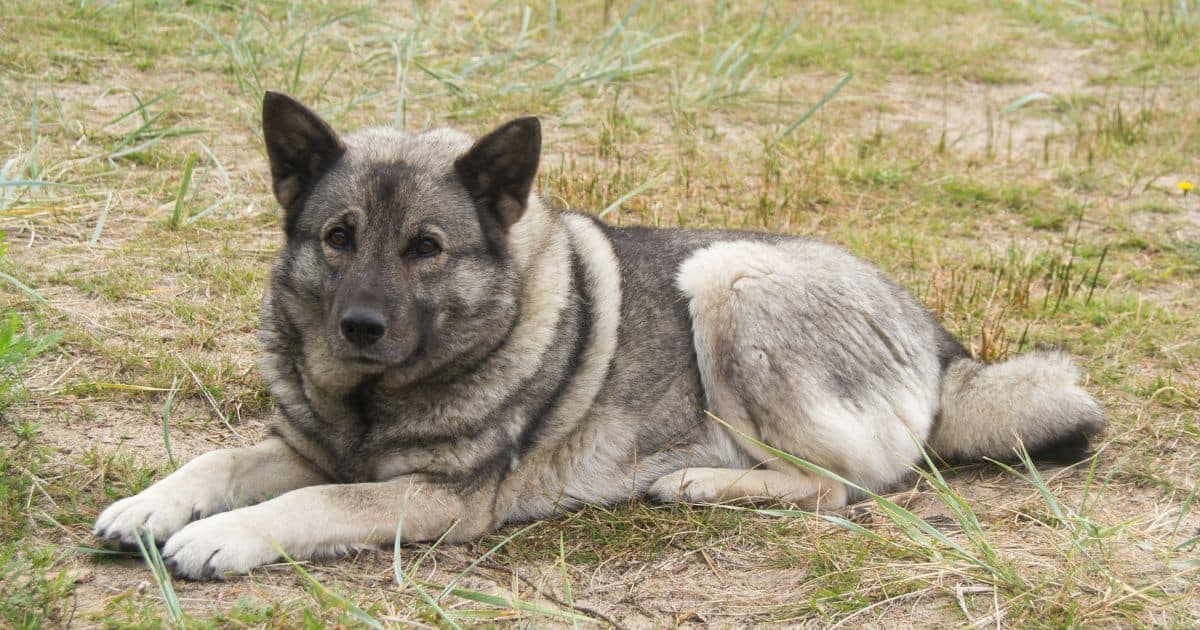 Closely resembling wolves, the Norwegian Elkhound has a dense, fluffy grey coat that does best in colder climates.
Closely resembling wolves, the Norwegian Elkhound has a dense, fluffy grey coat that does best in colder climates.
These dogs have extraordinary stamina, originally bred for hunting.
These independent dogs are strong-willed so training can be difficult, as they’re not as concerned about pleasing their owners.
They are very devoted to their family though. They’re very affectionate and are excellent playmates for children.
Be prepared for lots of exercise with this breed. If they don’t get enough they’ll soon turn bored and destructive.
A good size yard is ideal, but this breed needs companionship and has to live indoors with the family.
Old English Sheepdog
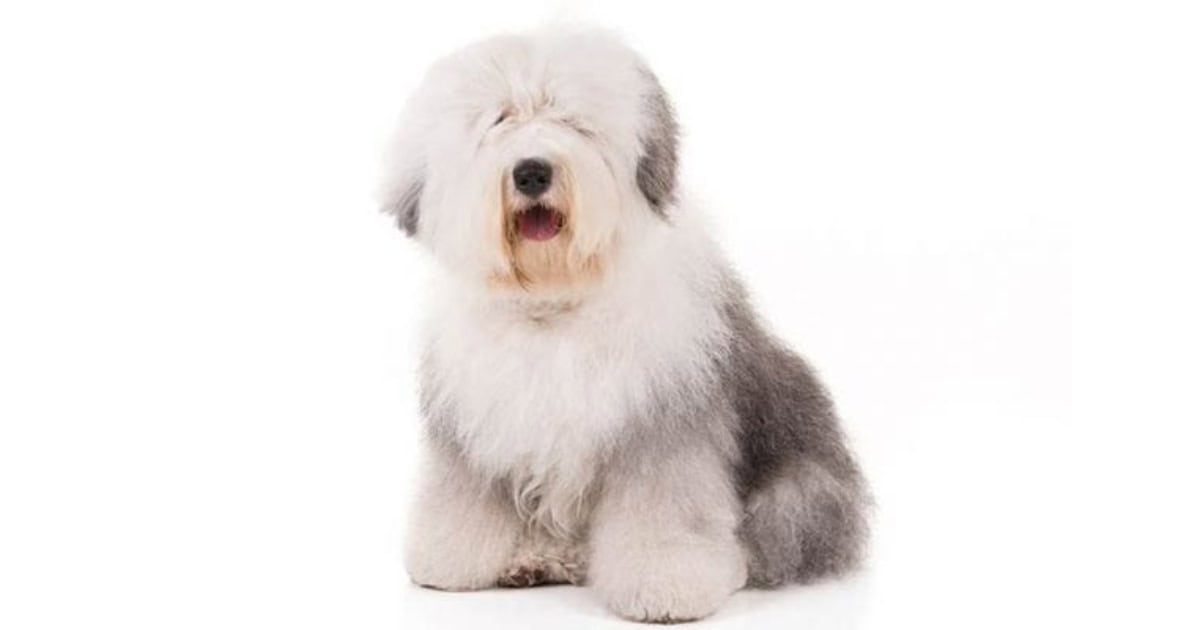
Photo sourced from AKC (American Kennel Club)
With a famously shaggy coat, the Old English Sheepdog is a family favourite. These dogs are playful, easy-going and humorous.
Old English Sheepdogs are excellent with children and have a protective nature.
They shouldn’t be left outside as they can develop separation anxiety and need to be surrounded by people.
Surprisingly, this large breed is very adaptable and can live in an apartment if exercised enough.
One of the largest drawbacks to this breed is also one of the reasons they’re so popular.
While their shaggy coat doesn’t shed, it’s very high maintenance.
The long hair is prone to matting and you’ll need to spend at least three to four hours a week grooming.
Otterhound

Photo sourced from AKC (American Kennel Club)
The Otterhound is a rare, outgoing and affectionate breed.
They were originally bred in medieval England to hunt otters. They have a great sense of smell and are able to follow an otter’s scent under water. Otter hunting eventually became illegal because Otterhounds almost left them extinct.
Otterhounds have shaggy fur, a strong body and webbed feet. They love being in the water and are strong swimmers.
Presa Canario
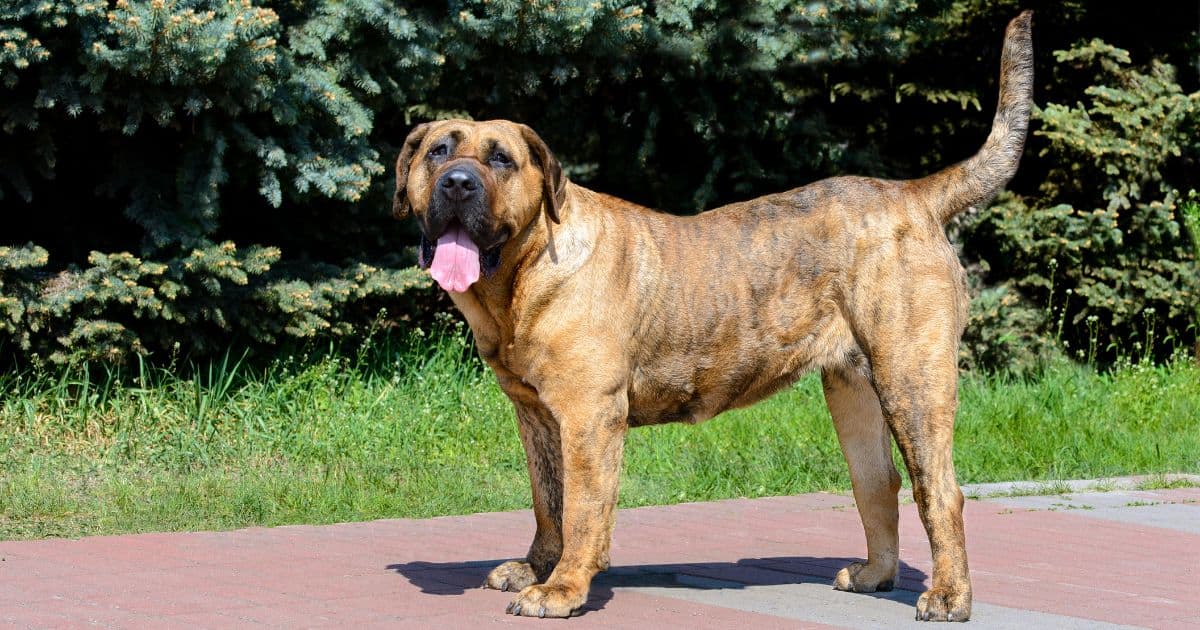 Developed in the Canary Islands, this dog has a history of being used in dogfighting.
Developed in the Canary Islands, this dog has a history of being used in dogfighting.
Unfortunately, the breed has restrictive ownership in Australia and is considered quite dangerous.
When raised properly, this couldn’t be further from the truth. The Presa is a sweet, docile, and very affectionate dog.
They protect their family at all costs, making them both a great companion and guardian.
They also excel in various canine competitive sports such as agility and working trials.
Like all dogs, early socialisation and obedience training will go a long way in ensuring your dog is safe, friendly, and happy.
Pointer
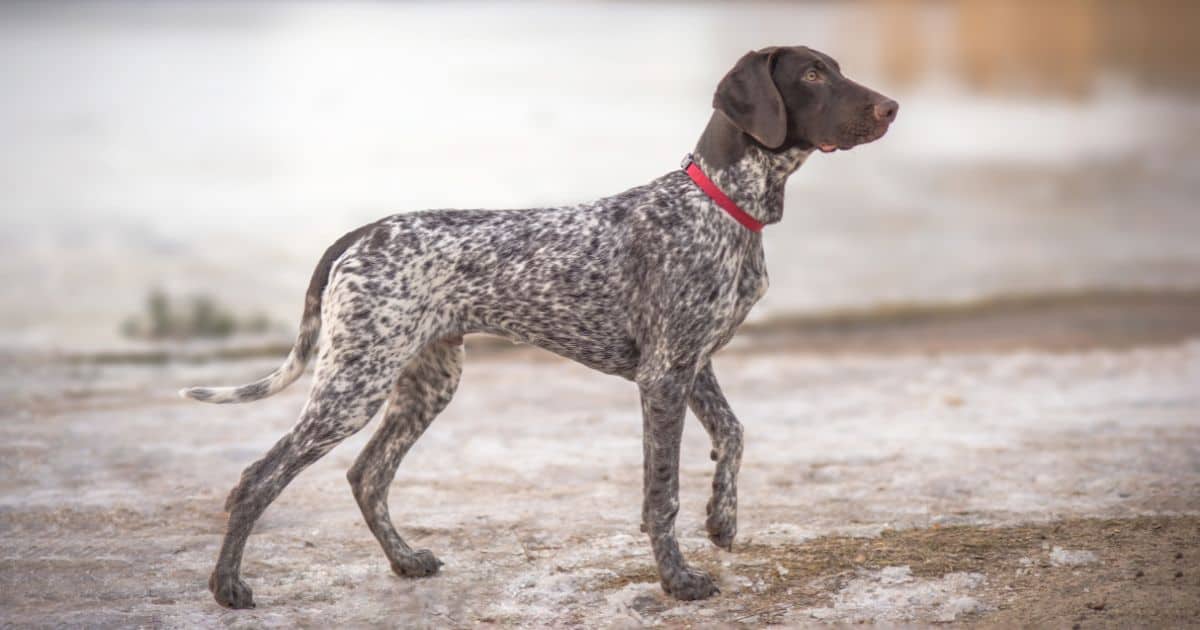 Known as the Cadillac of bird dogs, the Pointer’s slender body and speed has made them exceptional field dogs.
Known as the Cadillac of bird dogs, the Pointer’s slender body and speed has made them exceptional field dogs.
They got their name because when they scent game birds, they stand tall and still and point the hunter in the right direction.
While they’re exceptionally focused in the field, this breed is fun-loving and playful at home. Pointers love people and are very devoted to their family.
They’re an extremely active breed, so if you’re not using them for hunting be prepared to give your Pointer vigorous exercise daily.
Their distinctive coat is often patched or spotted, and is low maintenance.
Poodle

With their impressive hair-dos, Poodles are instantly recognisable. These elegant, impressive dogs are one of the most popular breeds in Australia. For good reason too – Poodles are intelligent, loyal, and very loving.
This breed is impressive in the show ring, often seen excelling at obedience and agility competitions.
They’ve got legendary intelligence and love to please, making them very easy to train. People often refer to how human-like Poodles seem.
Their intelligence can be an issue if not properly trained though. An untrained Poodle will soon consider himself the alpha of the family and will learn bad habits if allowed.
Their non-shedding coat makes them great for allergies but is high-maintenance requiring a regular grooming schedule.
Portuguese Water Dog
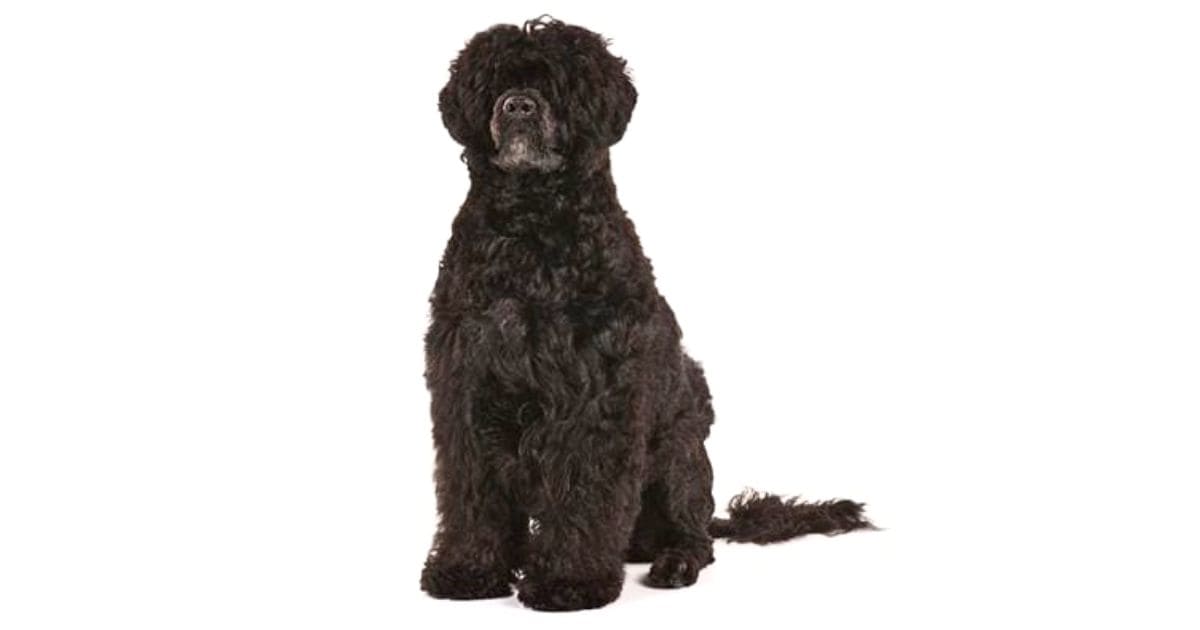
Photo sourced from AKC (American Kennel Club)
These dogs once served as crew on fishing trips, retrieving lost gear and herding fish into nets.
True to their name, these dogs love the water. They’re very fun-loving energetic dogs and thrive with an active family, especially one that has a swimming pool or boat.
Close relatives of the Poodle, their long curly hair doesn’t shed. Portuguese Water Dogs are very intelligent and adaptable. With enough daily exercise they can live in apartments comfortably.
It’s important to start training young, as retraining these dogs out of bad habits is very difficult.
Rhodesian Ridgeback
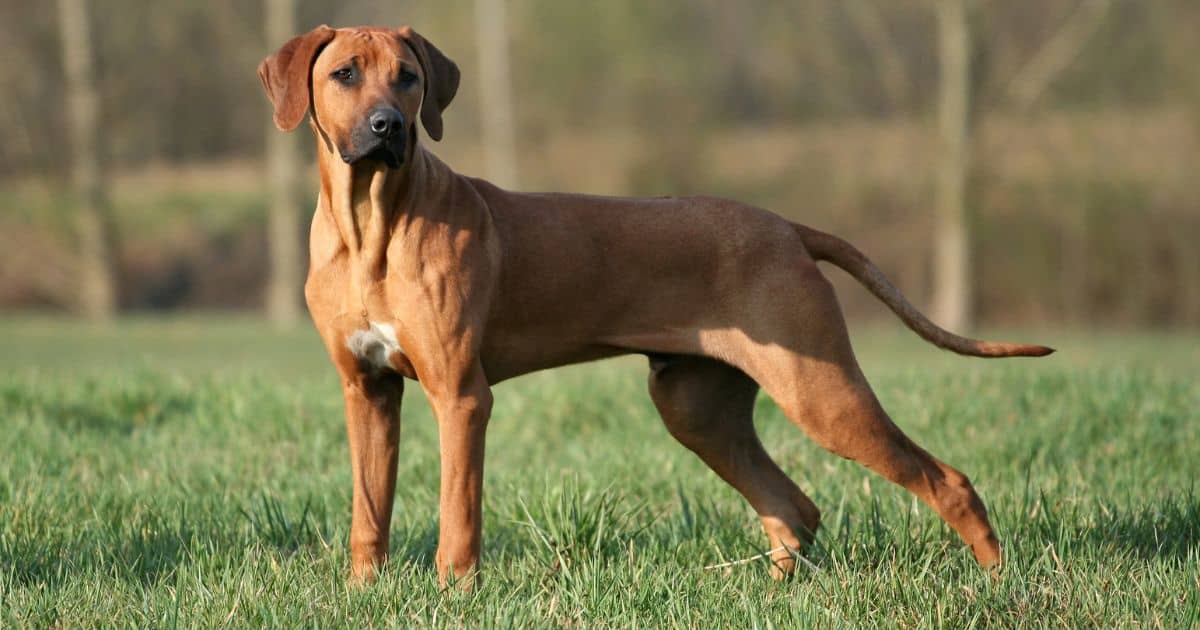 This regal, handsome breed was developed in Africa for hunting and guarding. In fact, they were often used to hunt big game like bears and lions.
This regal, handsome breed was developed in Africa for hunting and guarding. In fact, they were often used to hunt big game like bears and lions.
Their strong, muscular bodies make them great athletes. Rhodesians are often seen competing in various sports including tracking, obedience, and agility.
Because of their huge size (one of the biggest dog breeds on this list), intelligence, and power, this breed isn’t for everyone.
They also need a high fence to keep them from escaping, as well as early and ongoing training. For the right family, Rhodesians make gentle, humorous, and intelligent family companions.
Rottweiler
 Affectionally nicknamed Rotties, this German breed is strong, loyal, and loving.
Affectionally nicknamed Rotties, this German breed is strong, loyal, and loving.
Their black and tan coloured bodies are very muscular and powerful. Rottweilers are natural guard dogs and are typically reserved with strangers.
If trained properly, they’ll have a mellow, calm disposition but will be ready to defend their family if needed. If not trained or socialised properly, Rottweilers can become aggressive and overly-protective.
This breed needs firm leadership from their owner, and you’ll need to be dedicated to training.
Saint Bernard
 Saint Bernards are a huge, muscular breed. They come in shorthaired and longhaired varieties, typically with a white and brown patched coat.
Saint Bernards are a huge, muscular breed. They come in shorthaired and longhaired varieties, typically with a white and brown patched coat.
Despite their size, Bernards are quiet indoor dogs who are excellent family companions.
They’re gentle and patient with children, and don’t need a lot of exercise. The breed is slow to mature, and often stays puppy-like for years. The largest drawback is the mess.
Bernards are exceptional droolers, shedders, and often track mud and dirt into the house. Steer clear if you’re a neat-freak.
Samoyed
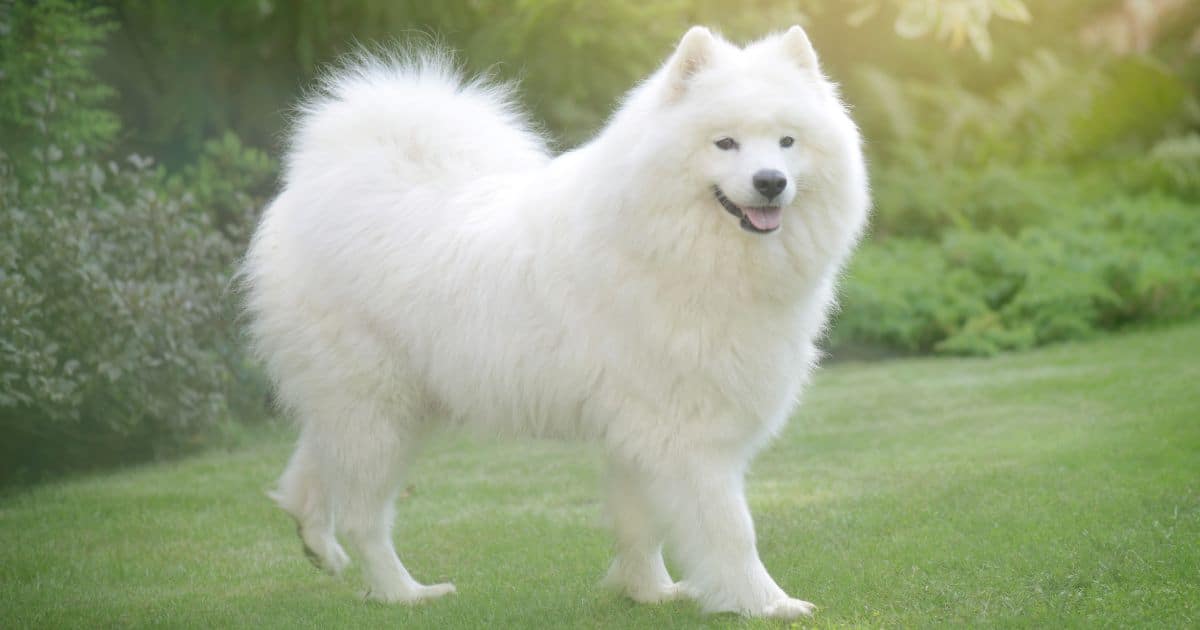 Photo sourced from AKC (American Kennel Club)
Photo sourced from AKC (American Kennel Club)
These dogs closely resemble big balls of white fluff. Originally bred to haul sledges and herd reindeer, Samoyeds are the picture-perfect winter dog.
Their beautiful coat isn’t the only attractive attribute about this breed though.
Samoyeds are happy, upbeat dogs that always look like they’re smiling. They’re an intelligent breed and need to be kept busy with challenges.
If left to their own devices, they can become noisy and destructive.
Their people-loving nature makes them excellent companions but means they can’t be left alone too much. Expect plenty of activity, training, and grooming to keep their white coat in check.
Siberian Husky
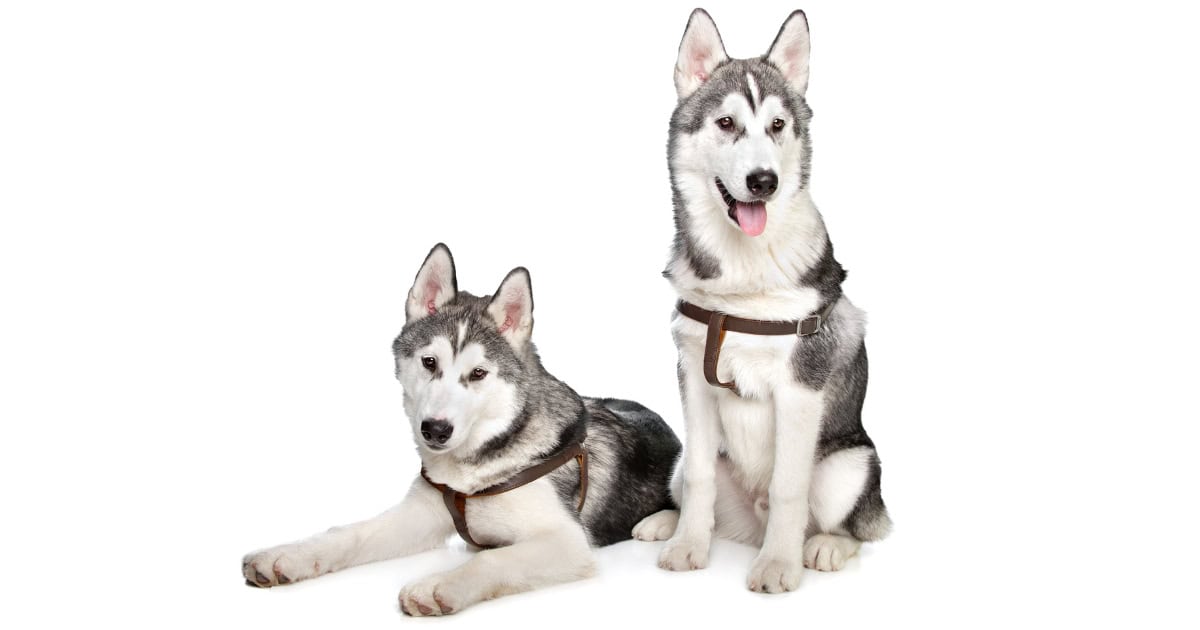
These beautiful dogs are a remarkable breed, with an intelligent mind and powerful body.
Their attractive black and white fluffy coat drives many people to purchase them, as well as their stellar temperament.
Huskies do well with children and in multi-dog homes, and love people.
They aren’t perfect for everyone though. Huskies are notoriously difficult to train and fit best with experienced dog owners.
The largest caution about this breed is that their reputation as an escape artist.
They’ll wander off at any given opportunity, so ensure you have an escape-proof yard before adopting a Husky.
Staffordshire Bull Terrier
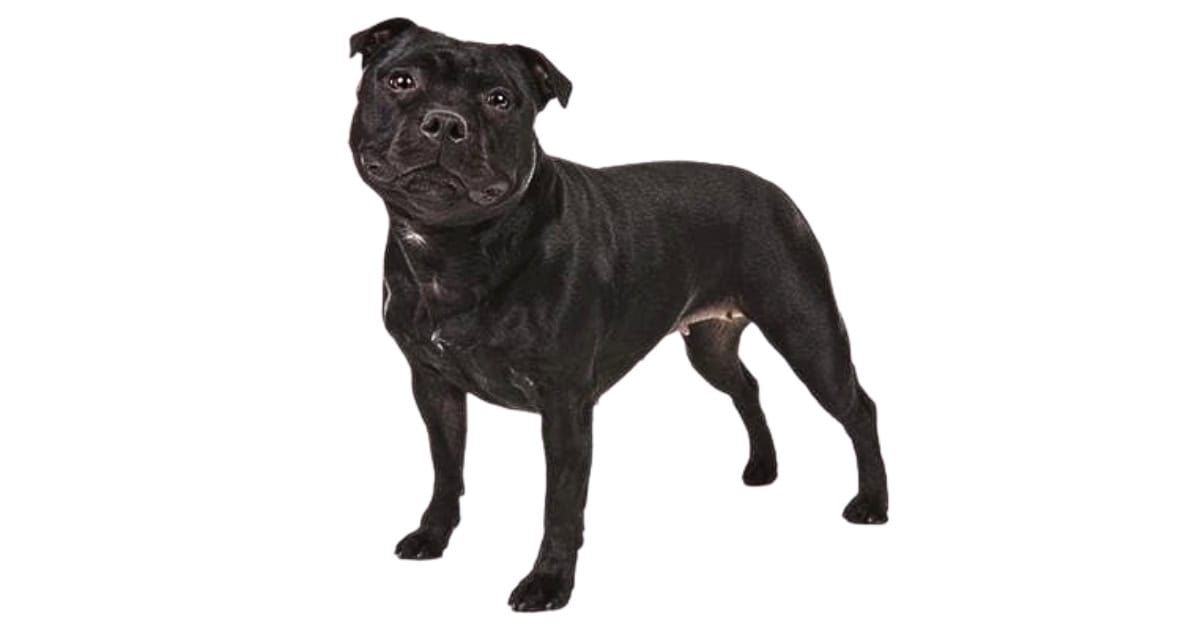 Photo sourced from AKC (American Kennel Club)
Photo sourced from AKC (American Kennel Club)
Nicknamed the Staffy, this breed can be imposing with their muscular body and powerful stance. Despite their tough dog appearance, Staffys are one of the most popular breeds in Australia.
And for good reason too – Staffys are sensitive, loving dogs that are very loyal to their family.
Their most loved past time is spending time with their family. This dog breed isn’t suitable to be left outside or without frequent human companionship.
Ongoing, consistent training will help ensure that your Staffy is friendly towards strangers and other dogs.
This breed isn’t recommended for a timid or first-time dog owner because of their firm training requirements.
Tibetan Mastiff
 Closely resembling a bear, the Tibetan Mastiff has a noble appearance and a beautiful thick, fluffy coat.
Closely resembling a bear, the Tibetan Mastiff has a noble appearance and a beautiful thick, fluffy coat.
As an independent guardian breed, socialisation is essential for this breed as they’re distrustful of strangers and other animals.
They’re very territorial and protective, so should never be walked off leash. They’ll bond closely with you and enjoy your company but will still think freely, so expect some tough training.
Their stubbornness hasn’t made them popular in canine competitions.
This breed is very loving and gentle though and are generally quiet dogs that do best when kept indoors.
Owning a Tibetan Mastiff is often considered very challenging, but very rewarding.




